Brazil, Part 7: Chapada Diamantina and Minas Gerais
— Brazil — 9 min read
September 25 - October 3, 2010
From Salvador, I headed inland to the scenic Chapada Diamantina and then turned south through the drylands of western Bahia and northern Minas Gerais, making my way down to São Paulo.
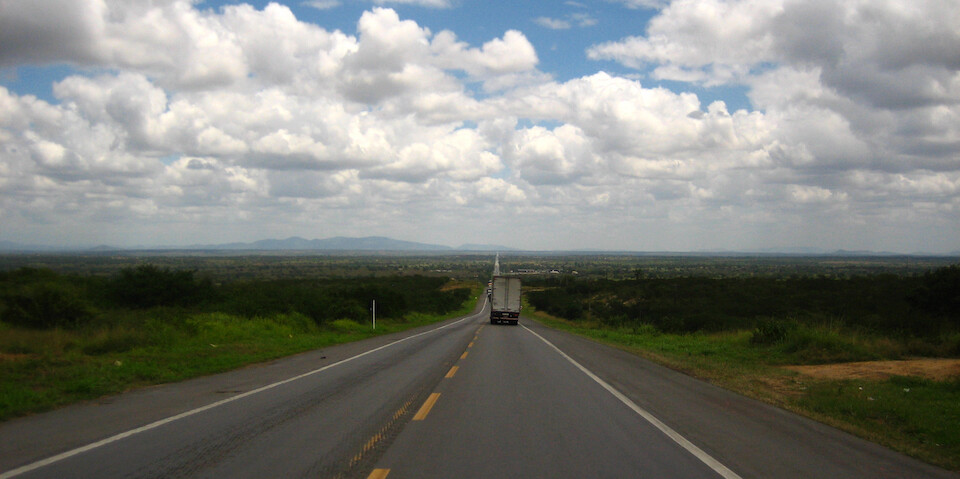
Riding the straight, busy highway, heading out of Salvador towards the interior.
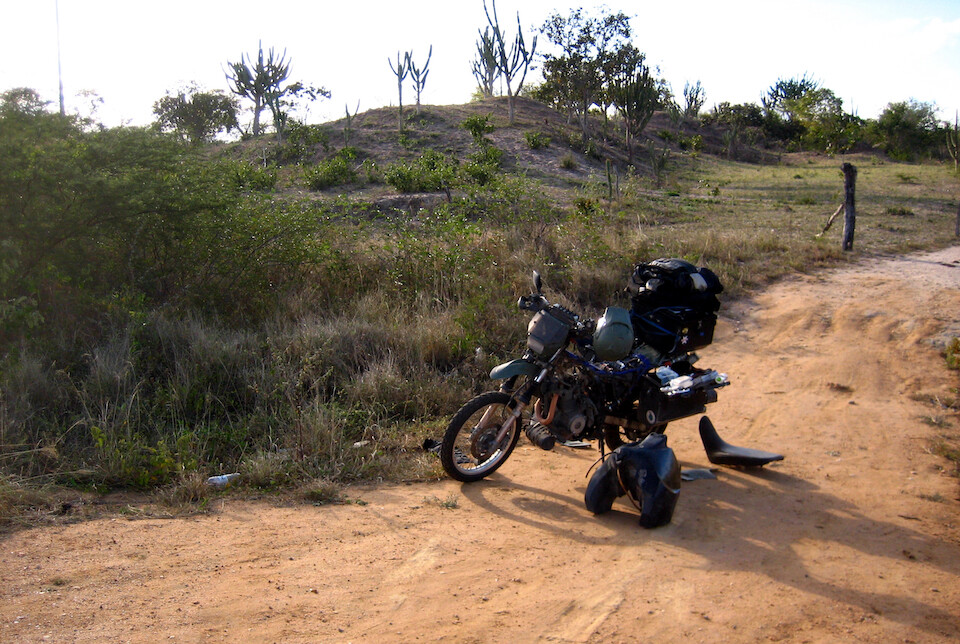
I casually stopped on the side of the road, just past the village of Rosalindho for a small break and was getting bothered by the notchiness of the throttle, so I tried a few adjustments. But, things got worse and the throttle was stuck open, it wouldn't close with the engine revving to full throttle upon ignition.
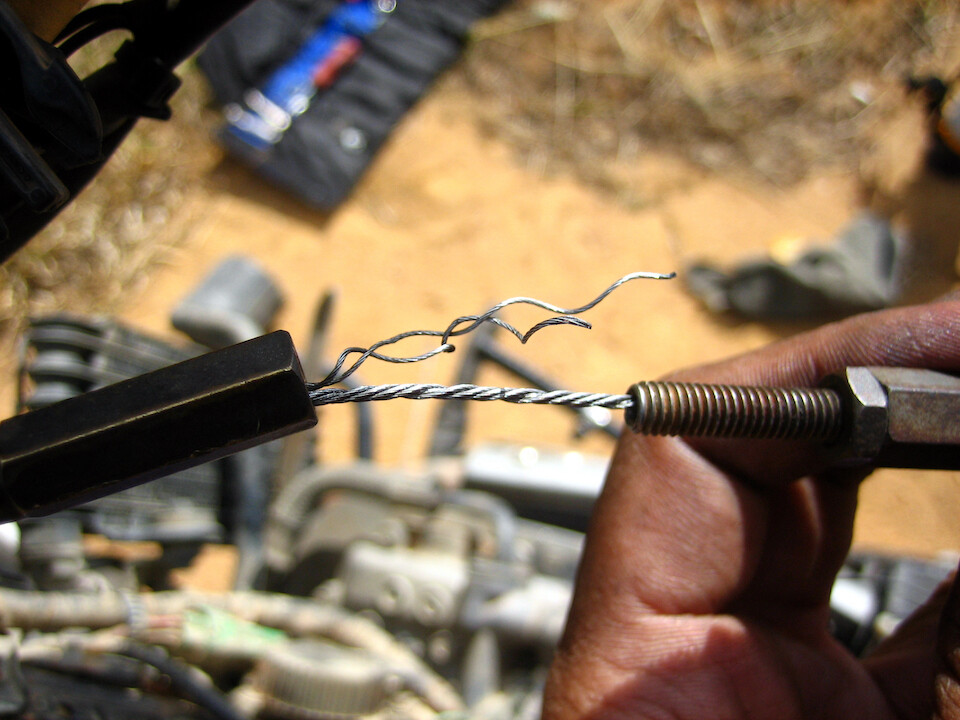
I opened up the throttle cable and found my problem - broken strands in the cable preventing it from sliding back to close the throttle. In hindsight, this problem was rearing its head earlier, even on the TransAmazônica, but I forgot to take care of it São Luís and now it was time to pay attention to it. I tried sniping the broken strands but it was no good; I needed a new cable and I wasn't carrying a spare.
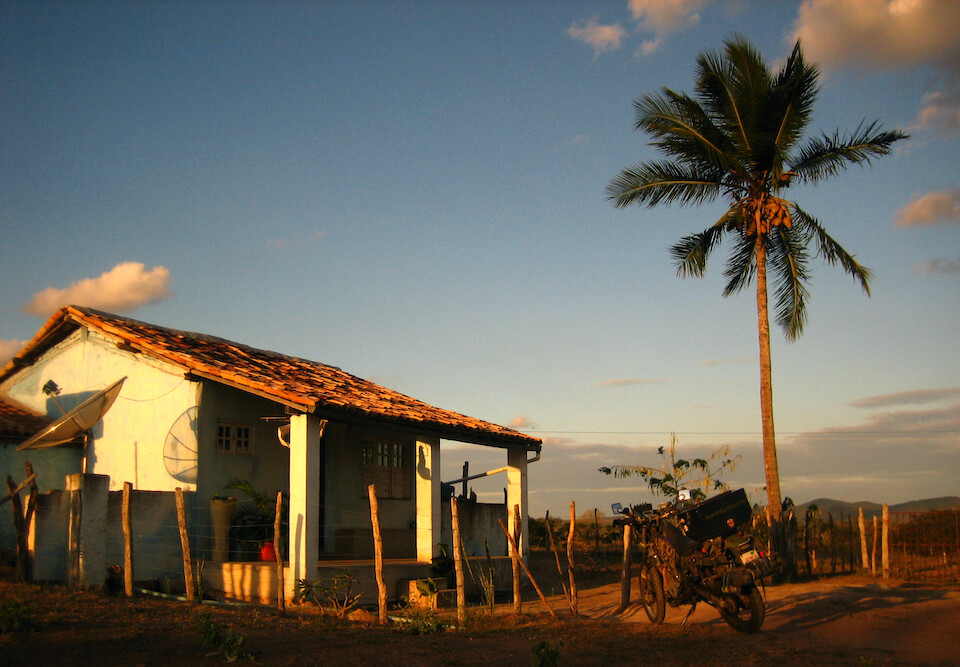
I apparently stopped in the driveway of this small house and went up to ask them if I could please stay there for the night. I explained my situation and they gladly took me in. It was a Saturday afternoon and all the shops would be closed tomorrow, so I needed to wait till Monday before going into the nearby city to procure a new cable. There were no neighbors around and the remoteness was apparent at night with our Milky Way galaxy shining in full brightness.
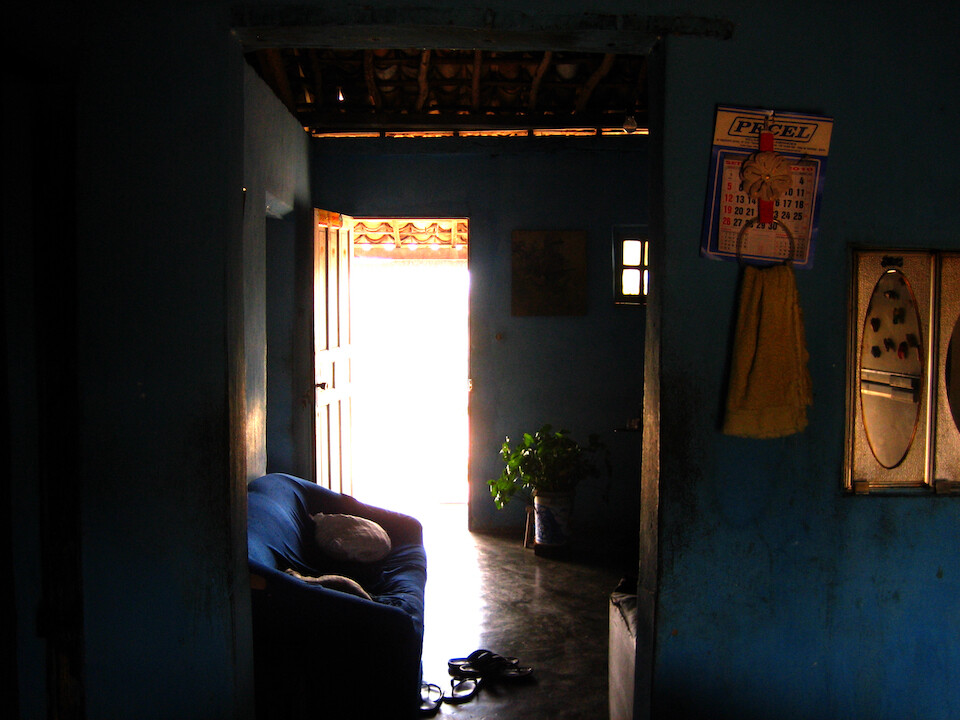
The man of the house was a veteran of the Brazilian military and was supporting his family on a small pension.
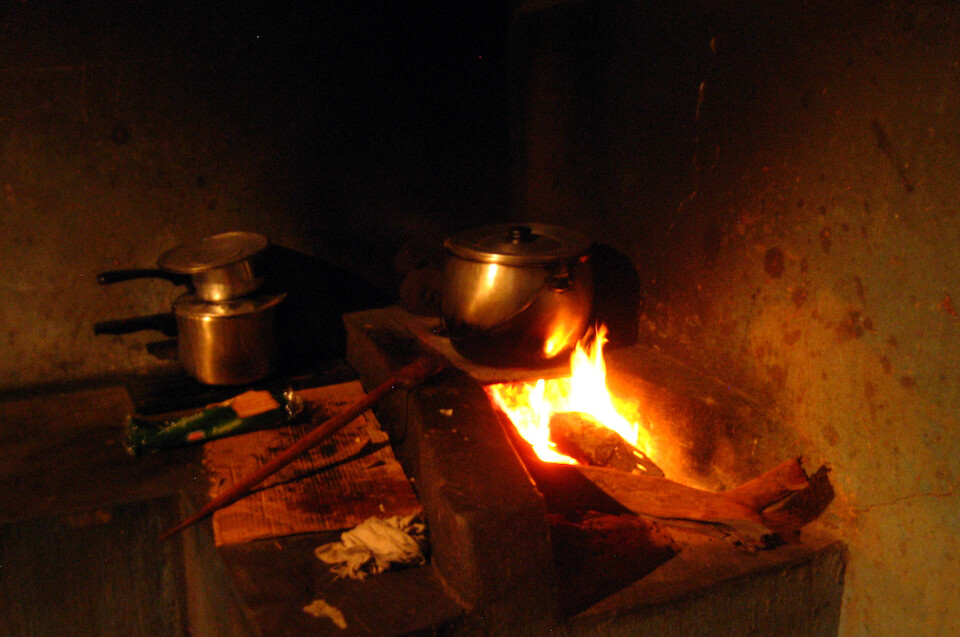
They had a gas stove and some other amenities, but still preferred to use this wood-fired stove for boiling water.
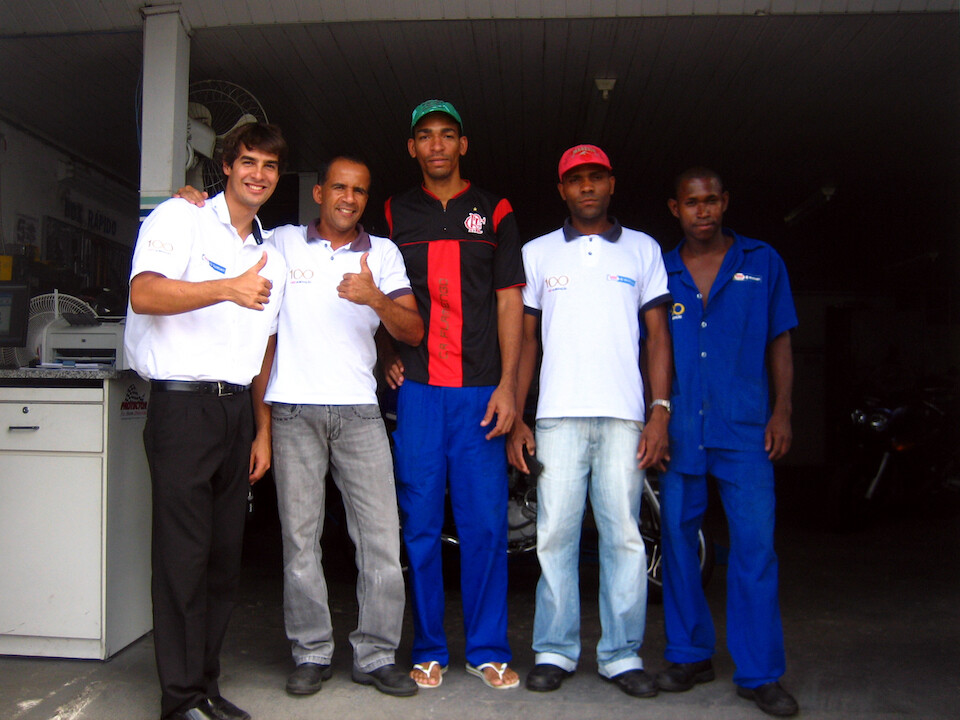
Monday morning, I was put into a bus heading to the nearest city of Feira de Santana and asked my way around till I found someone who could help: this Suzuki dealership. Since my carburetor is not stock, they didn't have any cables that fit but told me where I could find the separate pieces of the cable to make a custom one for my needs. They were also kind enough to let me use their tools in the shop without charge - I had to grind the terminal heads of the cable to make it fit properly. With a new throttle cable and a spare made, I took the next bus back to the house.
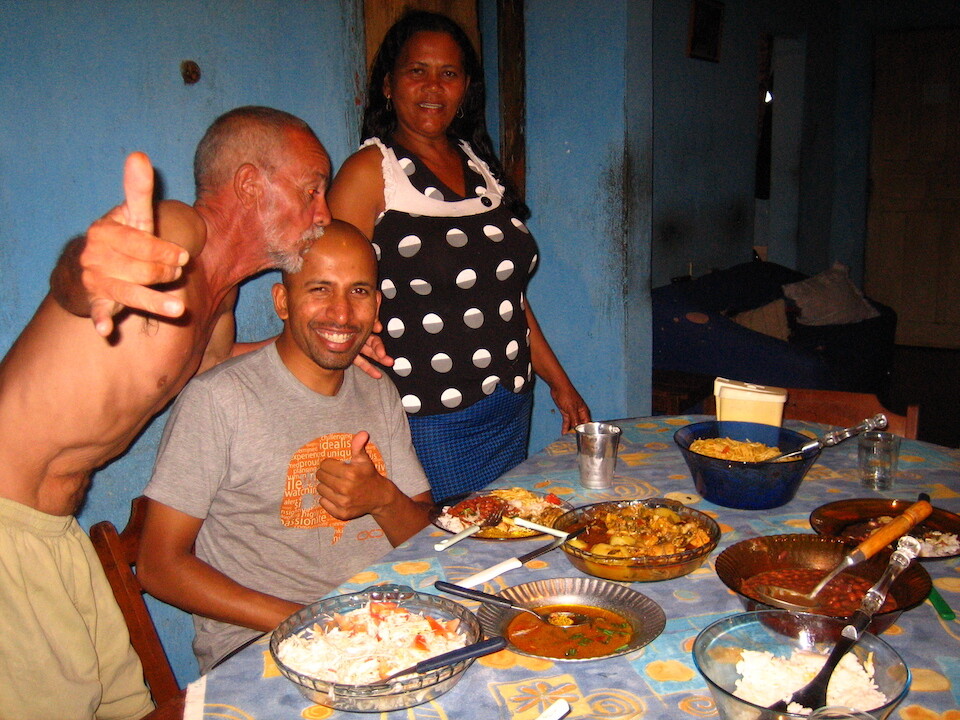
My hosts, the veteran and his wife showing how happy he was to see that I made it back all on my own. The bus from the city didn't arrive till early evening and he said he was worried that something happened to me and he had started to get drunk to calm his nerves. As this was my last night here, his wife prepared quite a feast of chicken in a gravy, rice, pasta and beans, which was all very tasty. My Portuguese wasn't that great by now, but he understood what I was doing and we managed to communicate. I thanked them for taking me in.
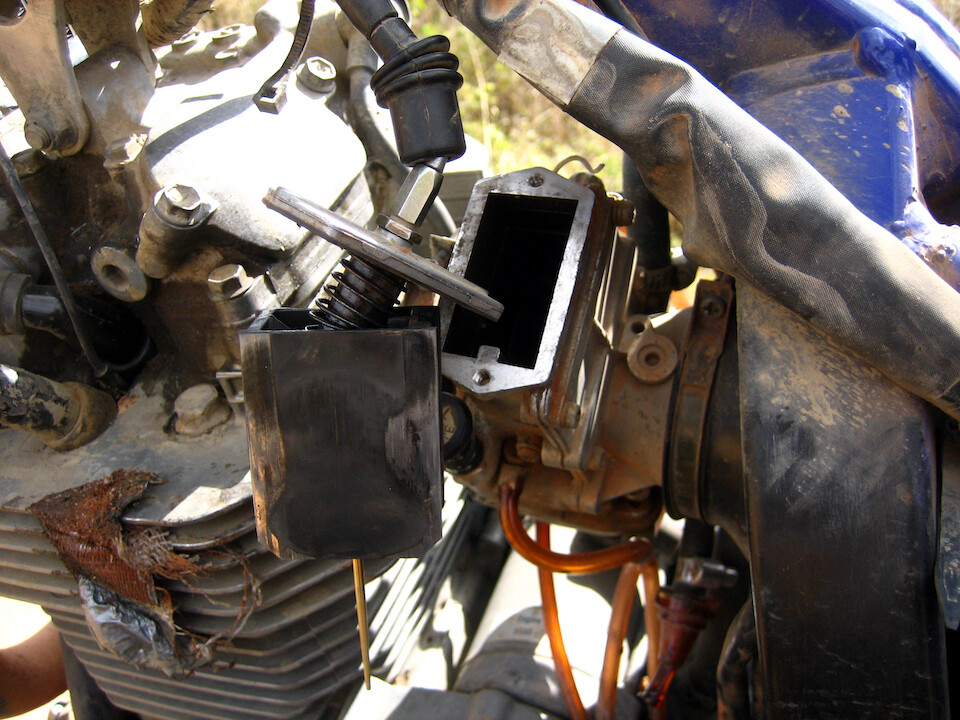
Thinking my problems were over was premature. I had never opened this Mikuni TM38 Flat Slide carburetor before and was not familiar with all the parts and its delicateness. While installing the new throttle cable, I had to man-handle the slide (black square) due to the tension in the system from the throttle-closing spring and this caused me to snap a small piece off of the jet needle (the brass needle coming out from the bottom of the slide). The result was that the bike would be running fuel rich (too much fuel for air) until I could get a new needle. The bike was running fine, so I figured best to get to São Paulo and figure it out there.
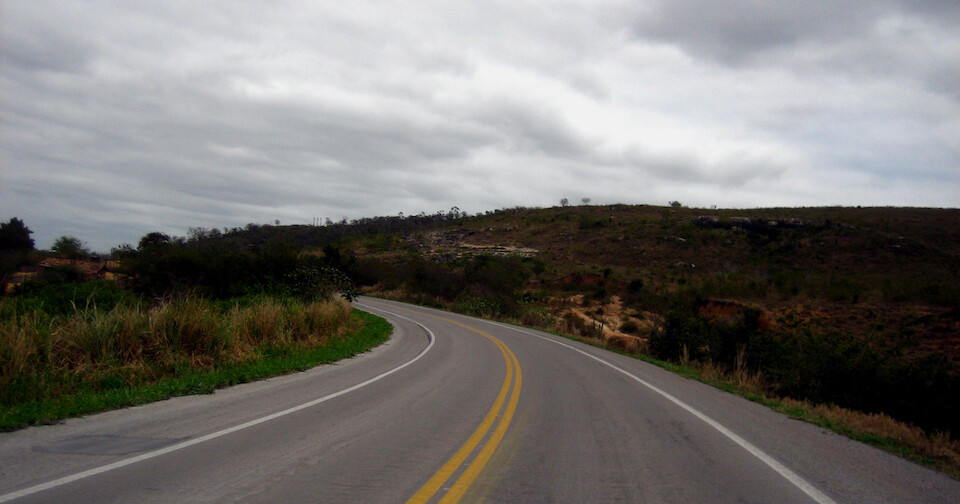
Back on the road, heading to Lençóis.
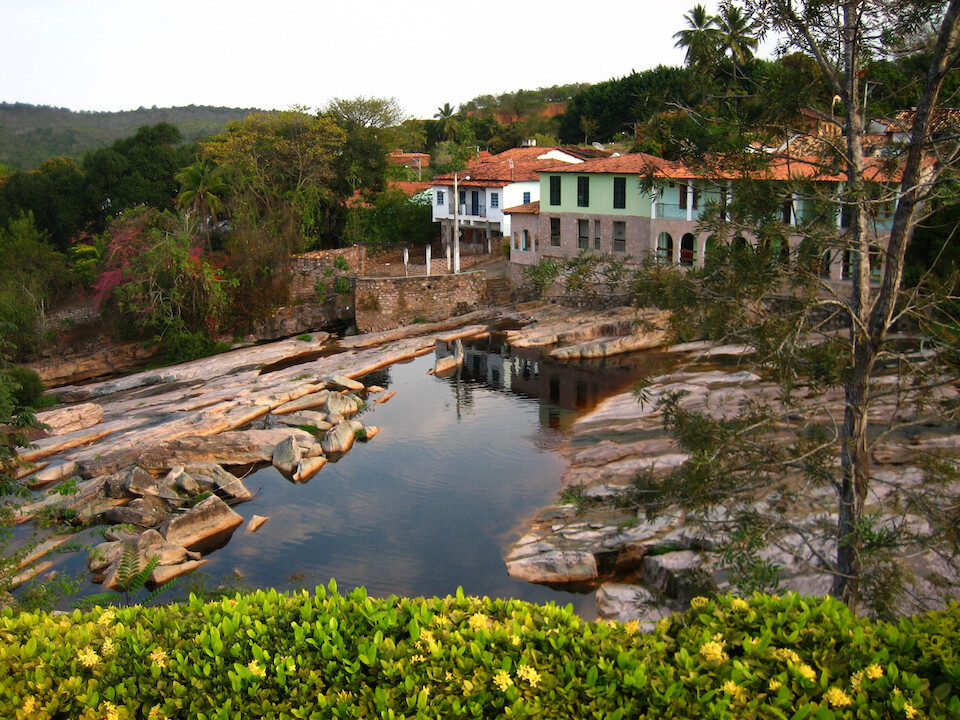
Rio Lençóis running through the town, which was at the center of the diamond mining boom in the mid 19th century here in the foothills of the Chapada Diamantina (diamond plateau).
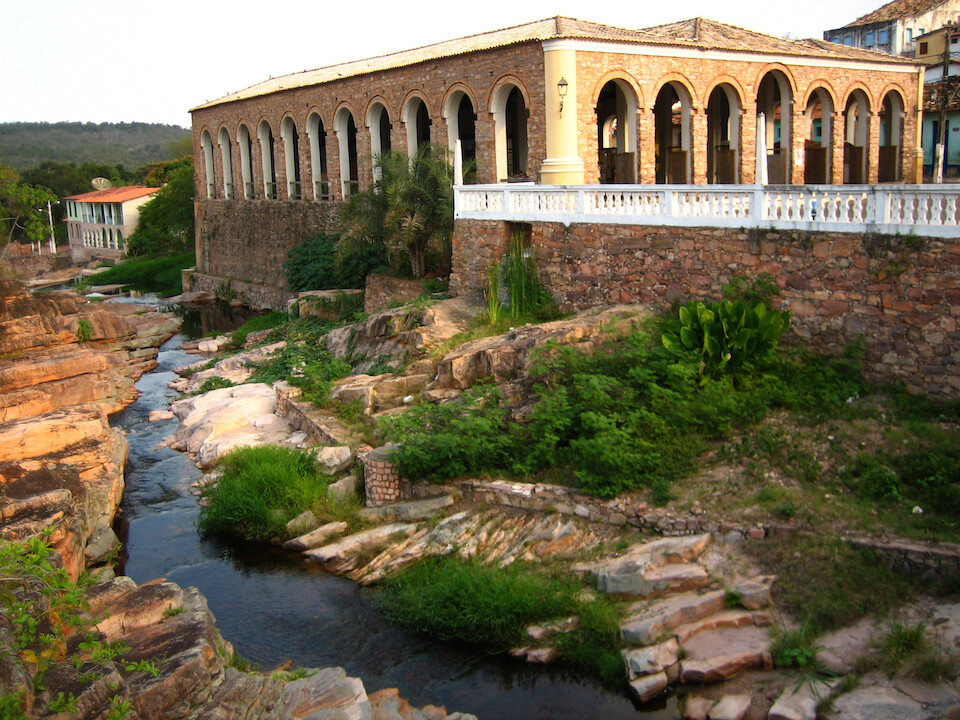
The central market building in front of Praça dos Nagôs (Nagos Square). After diamonds were discovered in nearby rivers in 1822, prospectors arrived from around Brazil and setup makeshift tent villages, which looked like bed sheets drying from the surrounding hills and from there came the name of the town, Lençóis, meaning sheets in Portuguese.
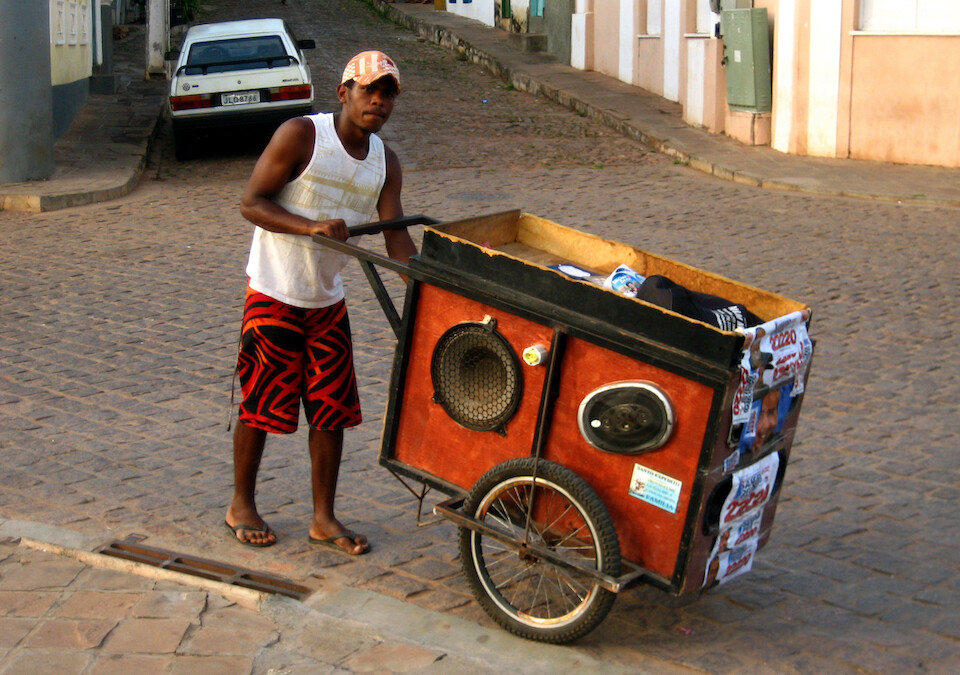
A week to go before elections and the campaiging was heating up with this street cart blasting out songs made in the favor of the particular candidate. Brazil is generally a well-developed country but it has a ways to go in terms of respecting personal space as this kind of close-range loud blaring of music would be considered rude in developed countries, but is totally acceptable here. But you know what, it keeps the atmosphere lively and there's never a dull moment.
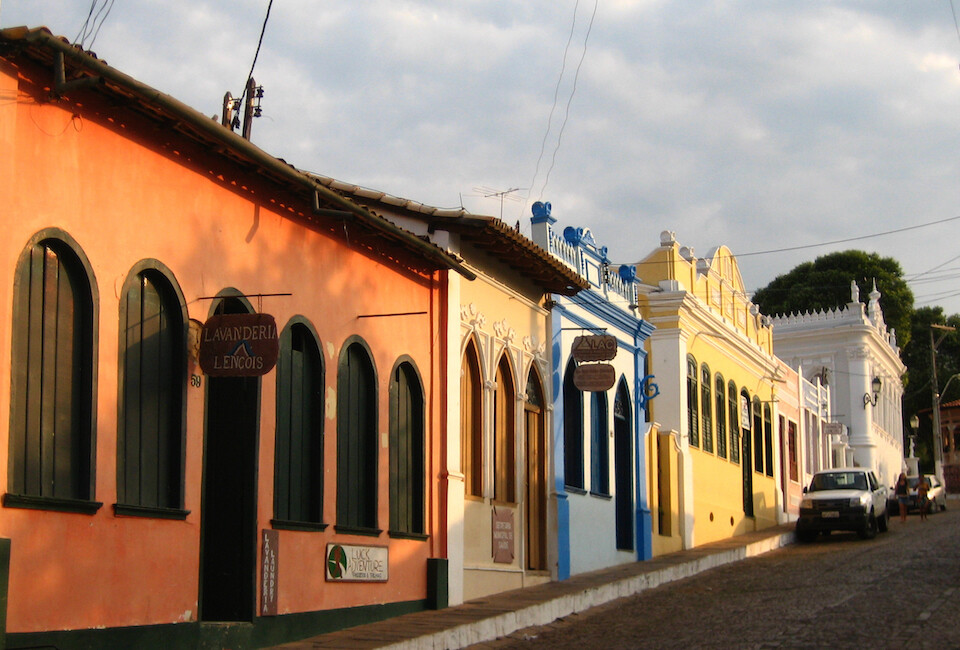
The colonial architecture of Lençóis - the best preserved of the area's diamond mining towns. The boom lasted only about 50 years and the diamonds were more of industrial quality for rock cutting rather than for jewelry. At its height, the French were the biggest buyers, using them for the Panama Canal (before the US took over) and the London Underground. But the discovery of the South Africa diamond mines spelled the end of the boom in Chapada Diamantina.
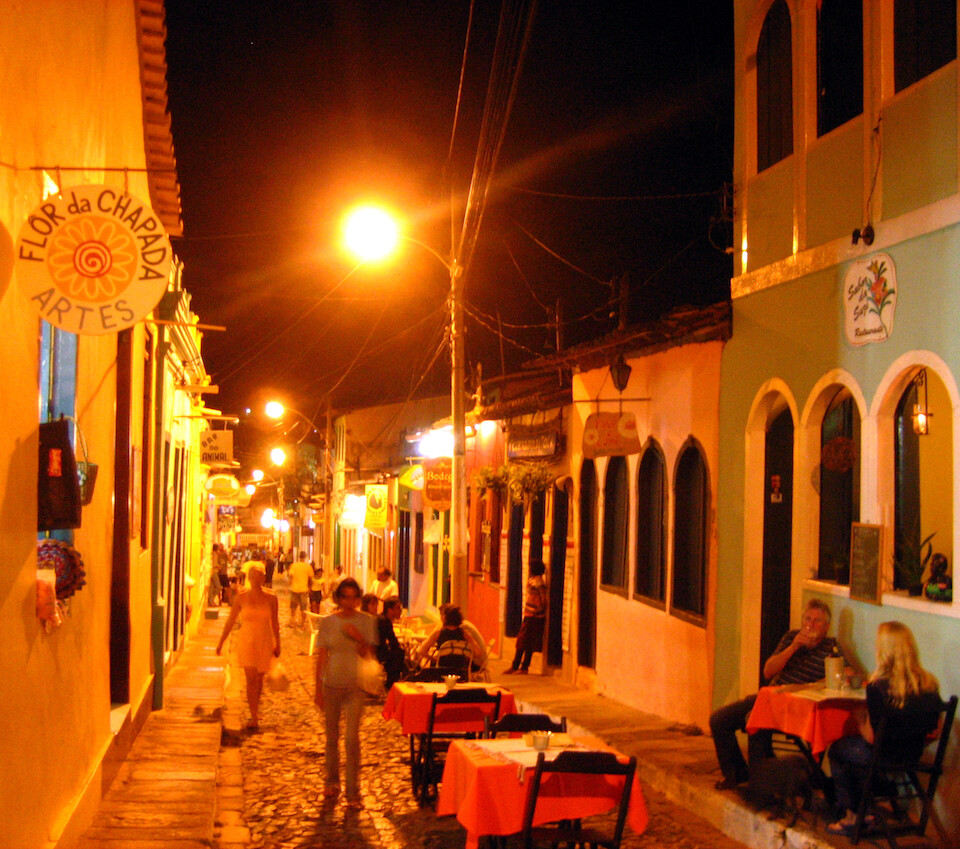
The central street where cafe tables were setup at night for dinners in the cool evening breeze.
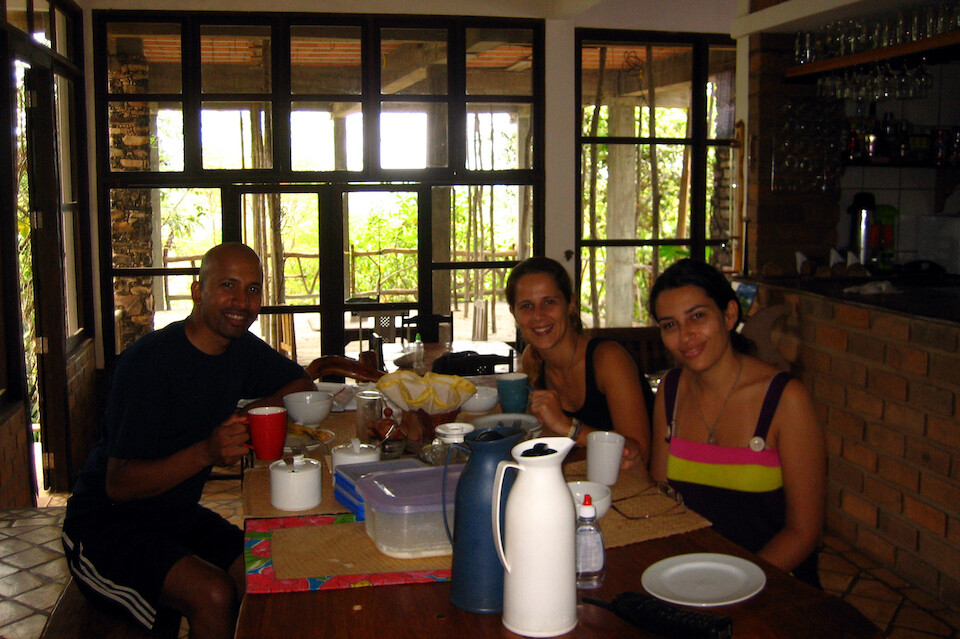
Having breakfast with my CouchSurfing host, Joana from Portugal and her friend, Roberta. Joana came to visit last year and ended up staying and is working with a volunteer project to teach English and also teaches pilates and yoga from her house.
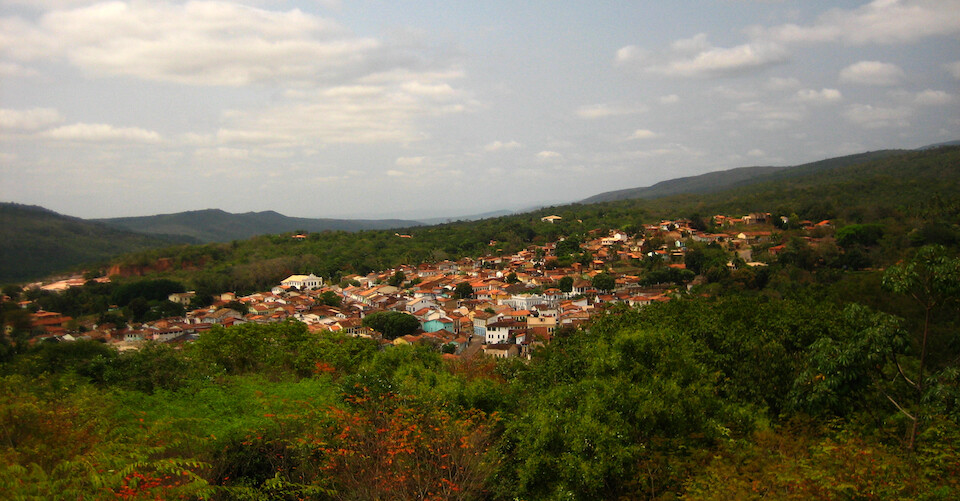
The town of Lençóis in the foothills of Chapada Diamantina, a national park known for its numerous waterfalls and good hiking trails.
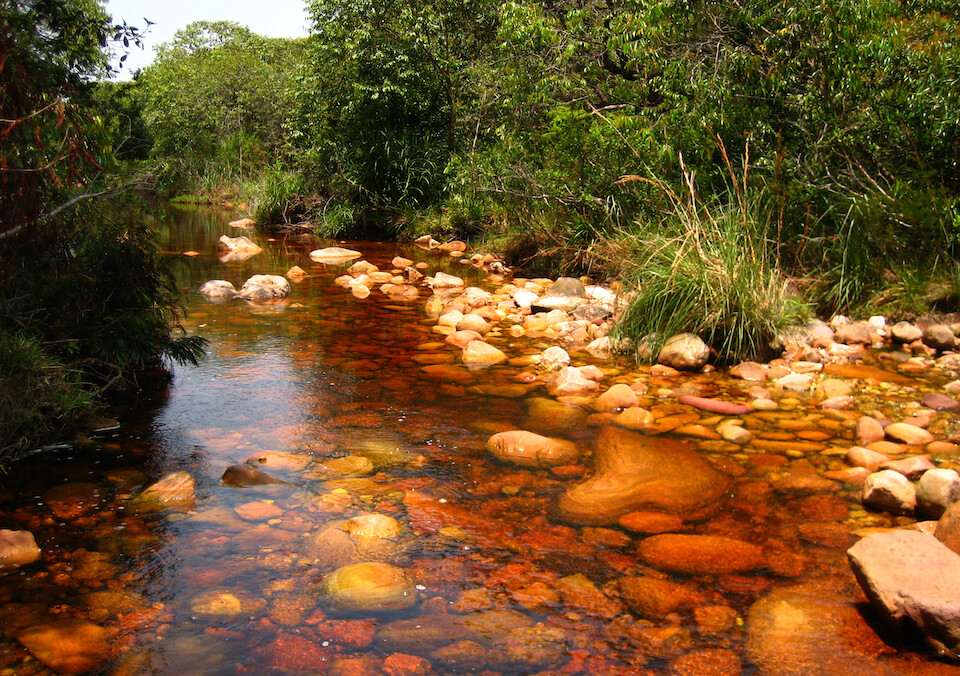
After breakfast, Joana and I headed for a small hike to see some waterfalls. The reddness in the water comes from tannins that are leached out as the water flows through a swamp or wetland. These kind of rivers are referred to as 'blackwater' rivers. It had the clarity of a good cup of tea.
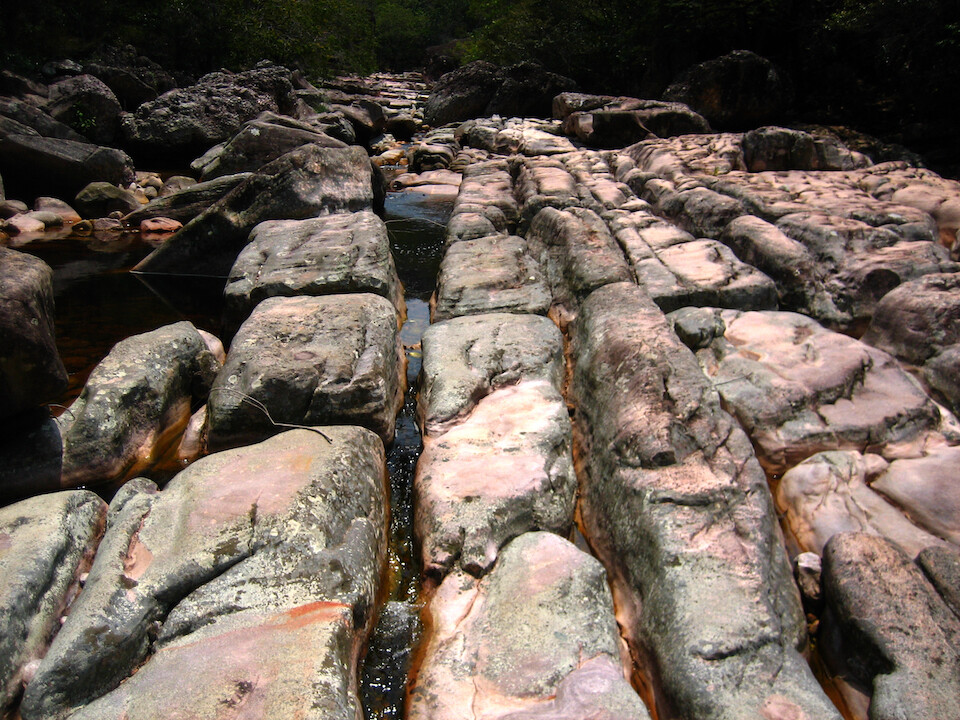
Water channels actively cutting grooves in the rocks. Geological processes might take eons to make an impact, but they're happening all the time around us.
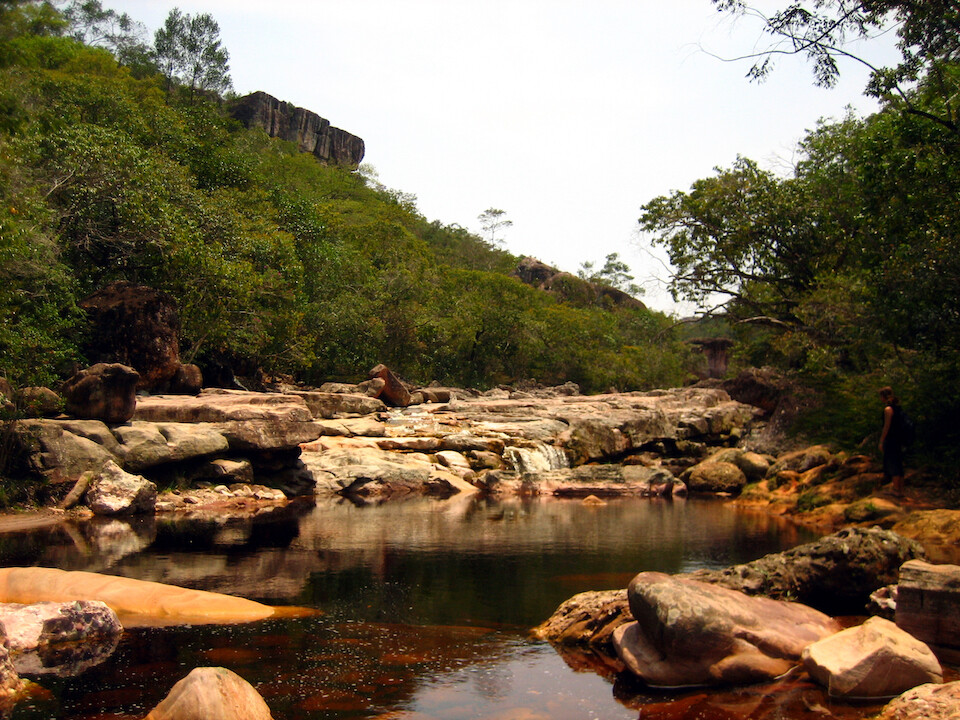
I was amazed at the red tinge of the water and initially thought it was due to cyanobacteria and heavy iron in the water, but later found out about the tannins. Either way, it makes for a unique landscape and for me, it's easy to be entertained by nature's color palette.

Soaking under a small waterfall in Chapada Diamantina and enjoying a natural massage thanks to gravity and some agua. The water was refreshing as the day warmed up.
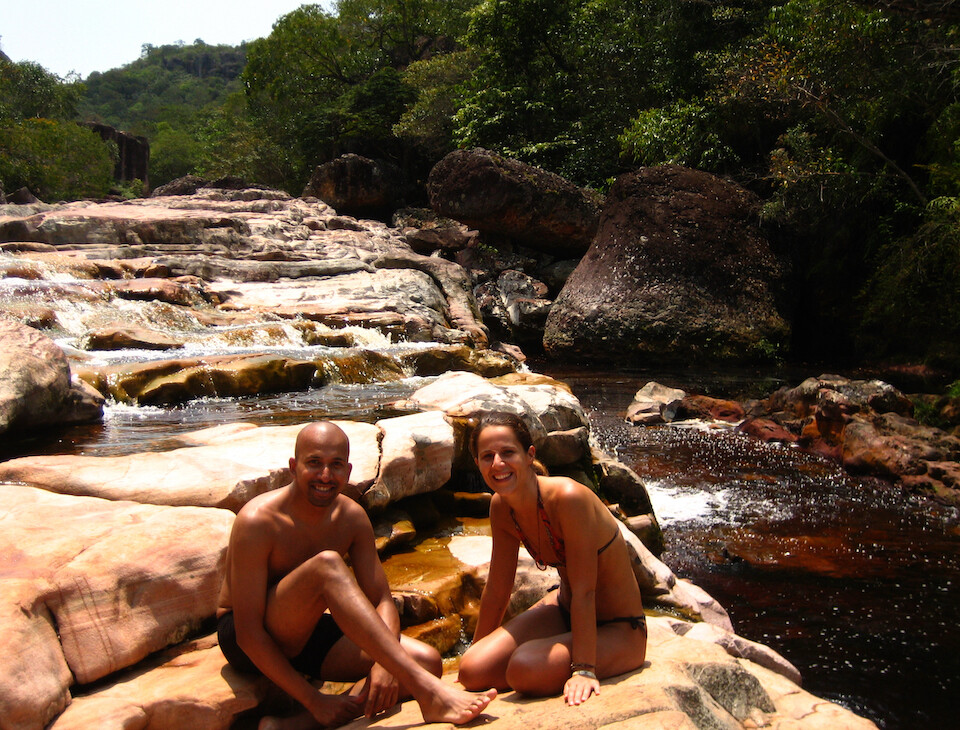
Drying out on the rocks after we relaxed under the waterfalls. I can see why Joana was captivated by this place and decided to stay.
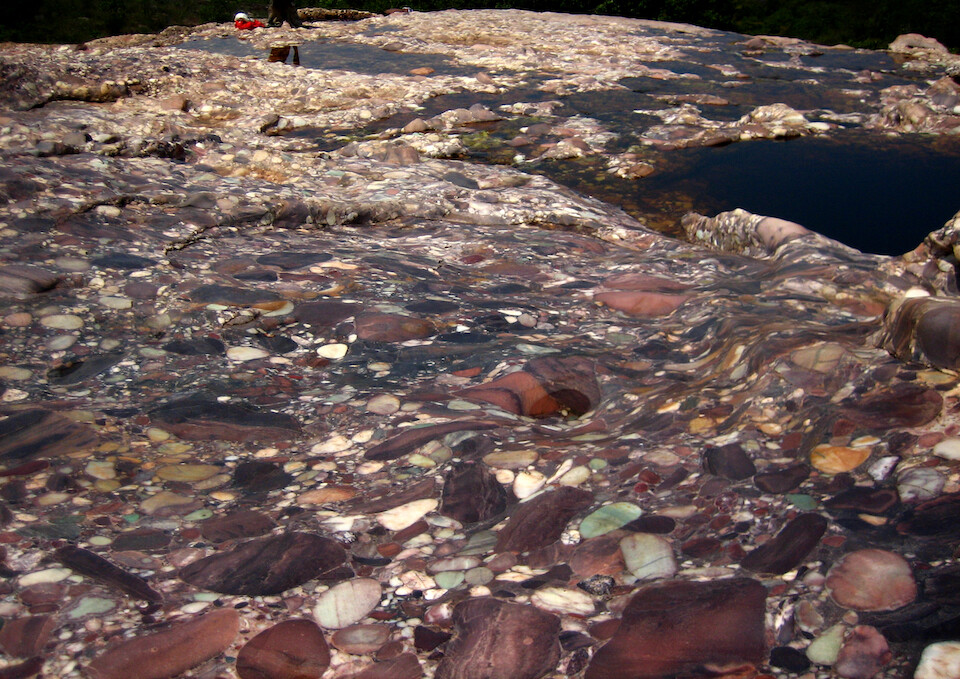
On the way back, coming across a rock face that was smoothed over by the river, showing a slice through the various stones.
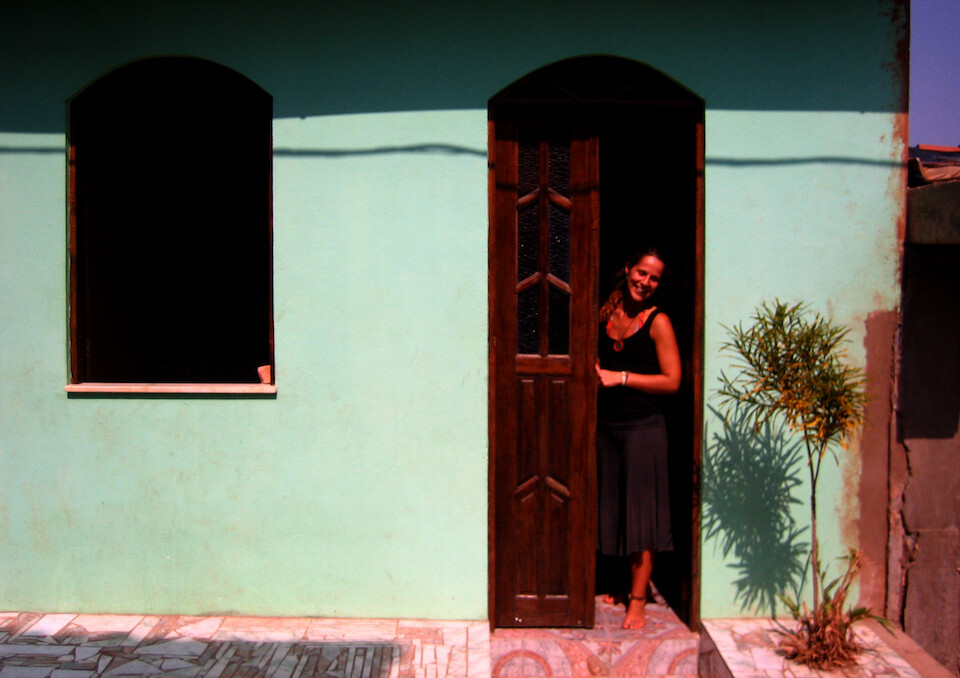
Saying bye to Joana and her cute little house in Lençóis. She's a vegetarian, so I prepared a pumpkin curry for her the previous night (it was all she had in her fridge).
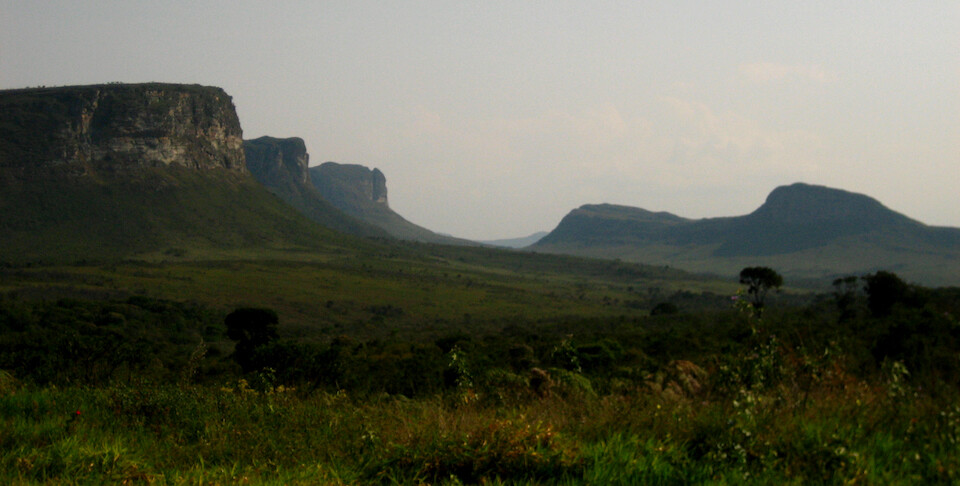
Heading out from Lençóis, I rode through the stunning scenery of Chapada Diamantina.
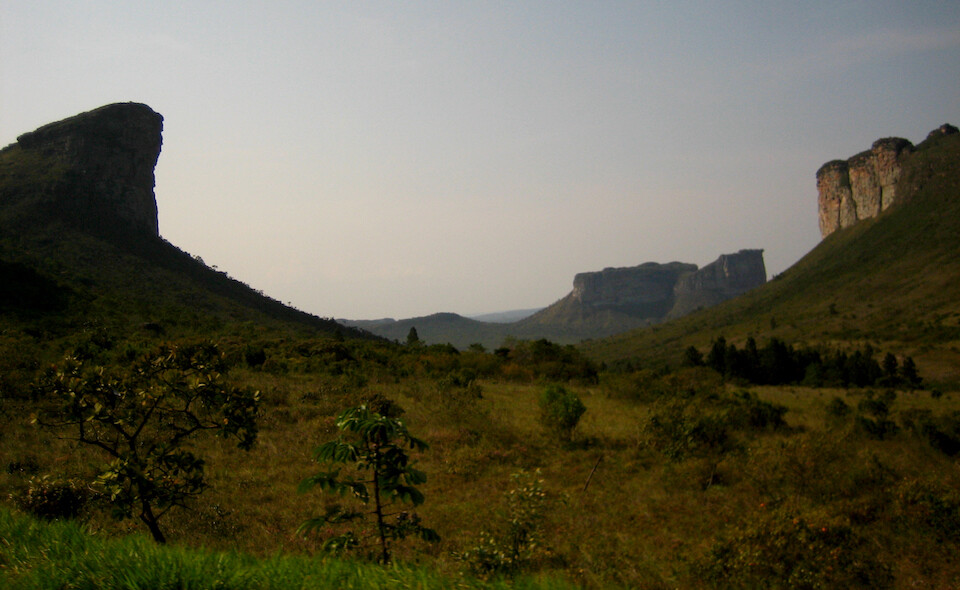
Just from the road, one can appreciate why this place has been referred to as Brazil's Lost World.
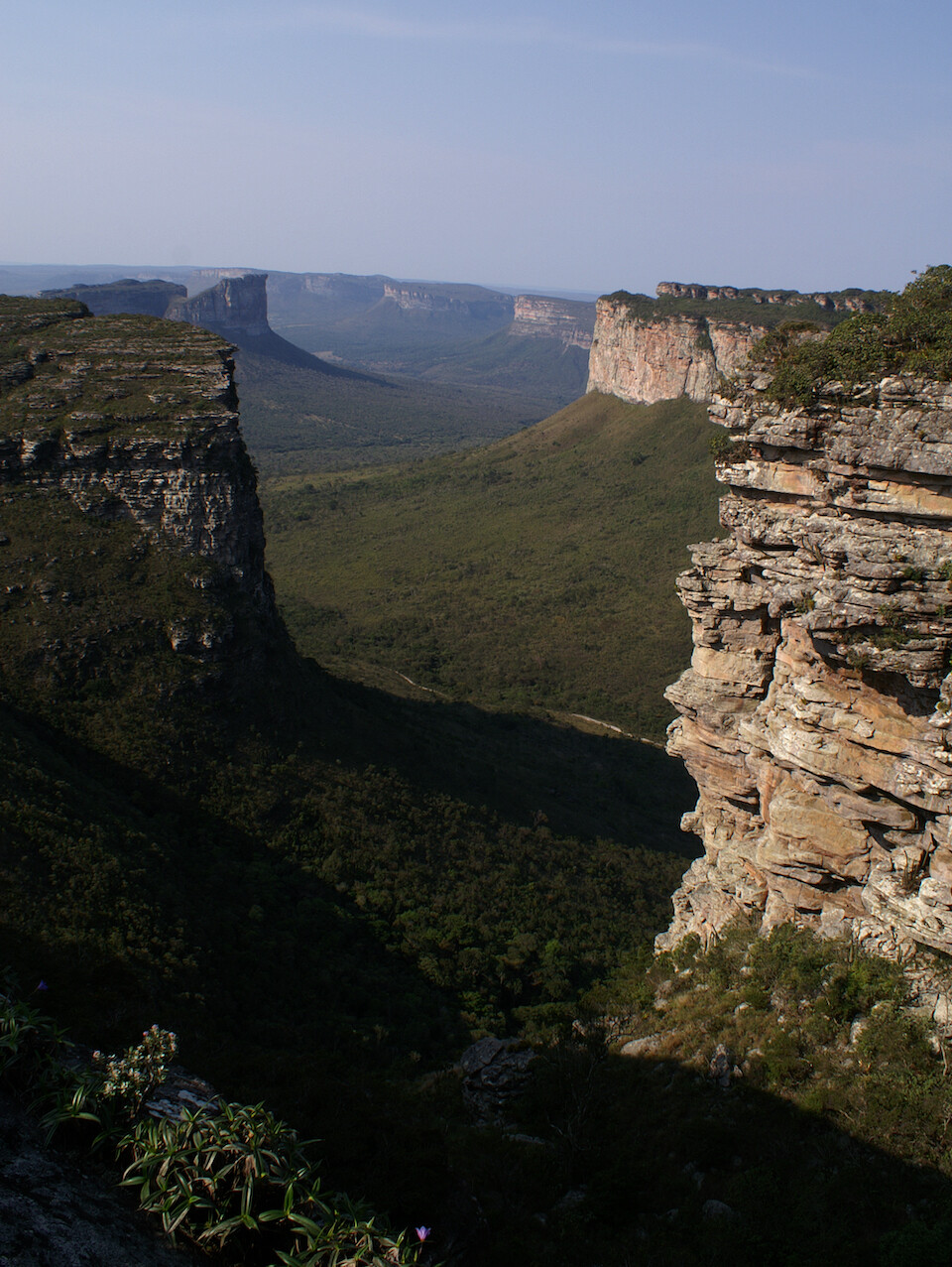
At the north end of the park, after a twenty minute hike I reached the top of Morro do Pai Inácio, and was rewarded with this view of Serra do Sincorá. It appears the crust was split open here, but it's probably due to water erosion.
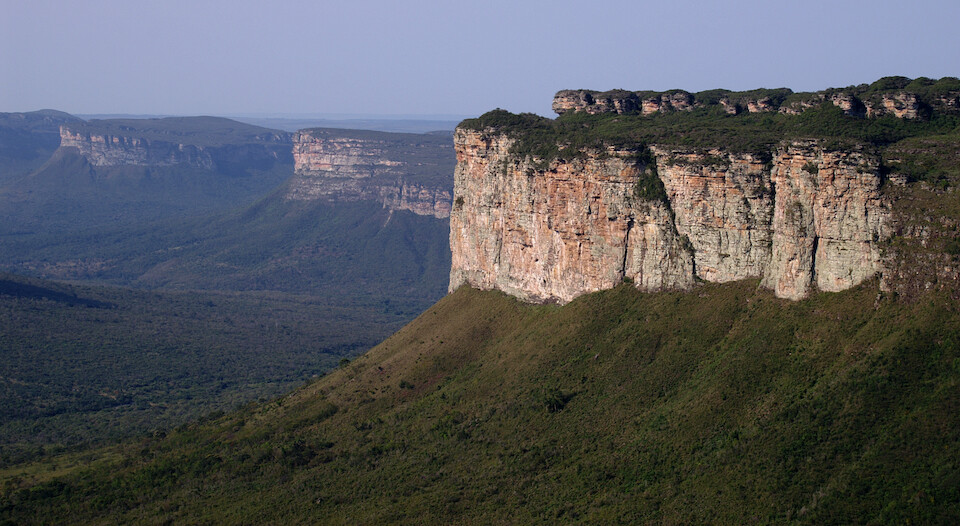
There was no one around and the winds were blowing fiercely at the top of the cliffs.
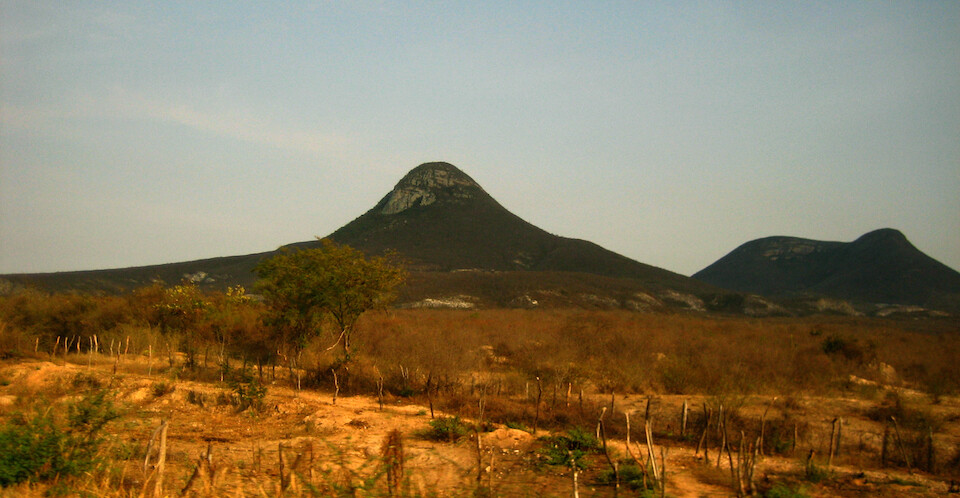
After a night in the small town of Seabra, I continued south to Montes Claros. A budding volcano?
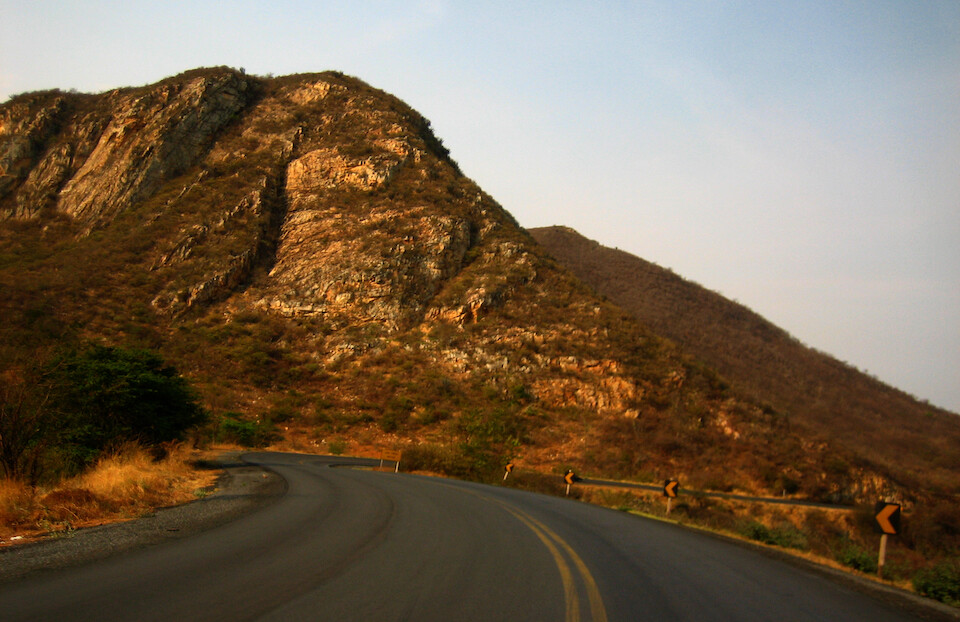
The roads were generally flat with a few hills and curves thrown in.
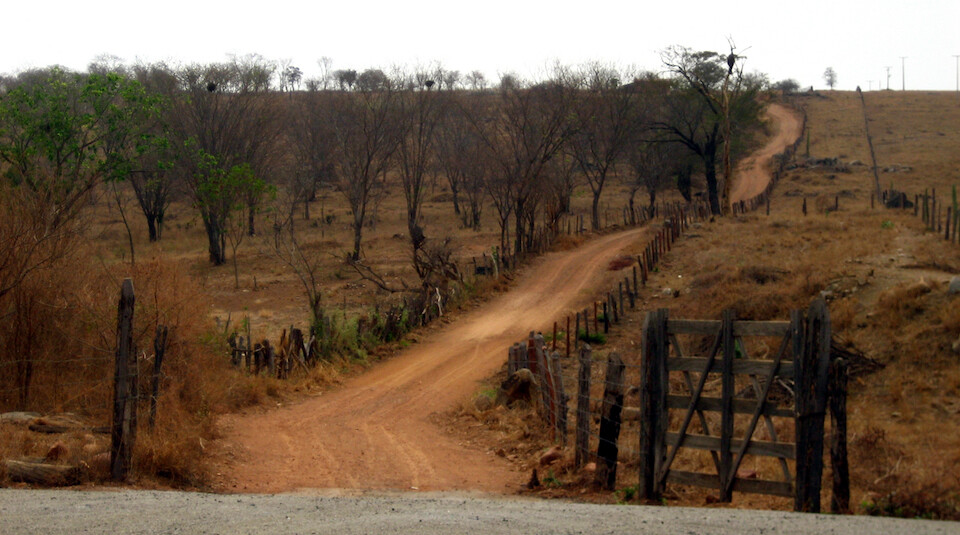
A dirt road leading into a ranch.
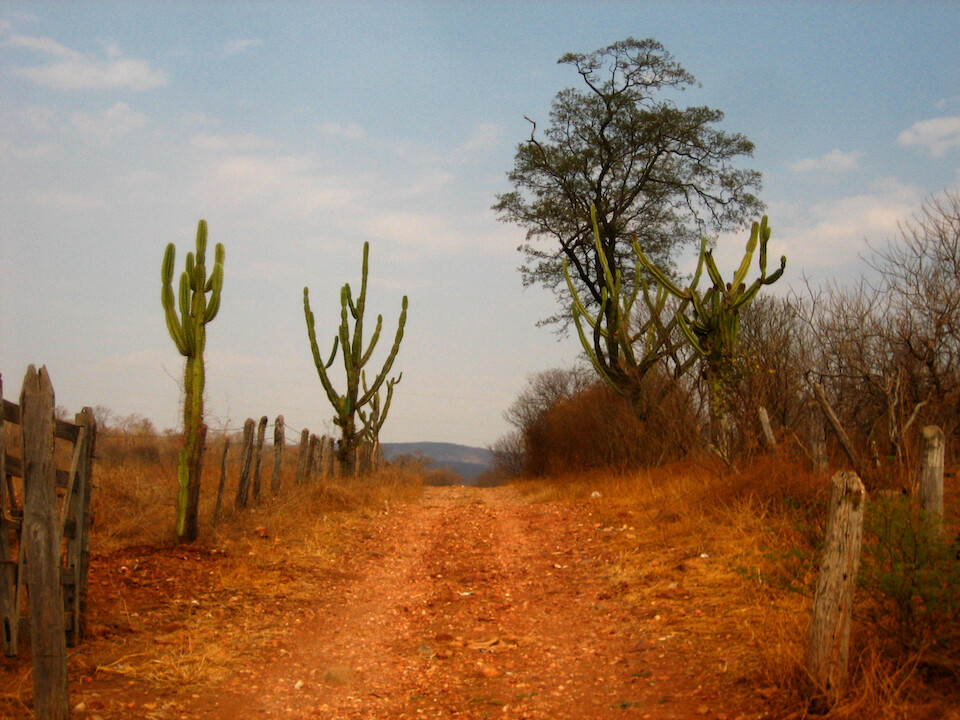
Cacti indicating the dry climate of inner Bahia.
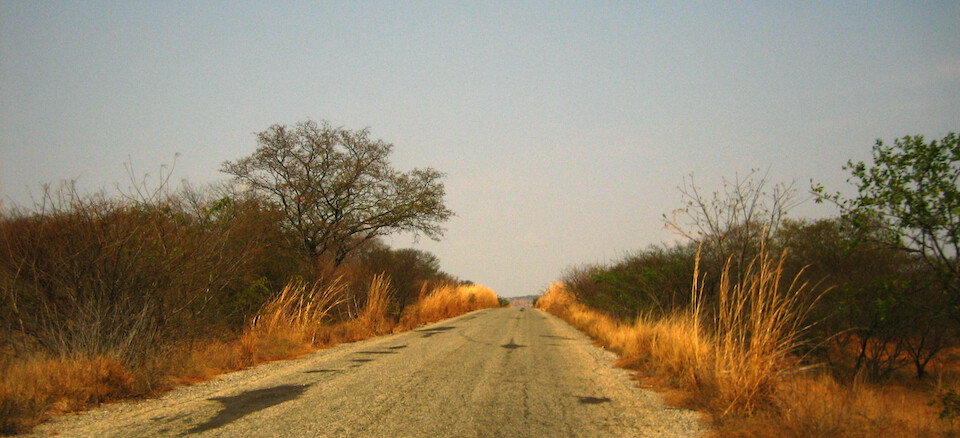
The lonesome Bahia state highway 156 lacking significance to even get painted lines.
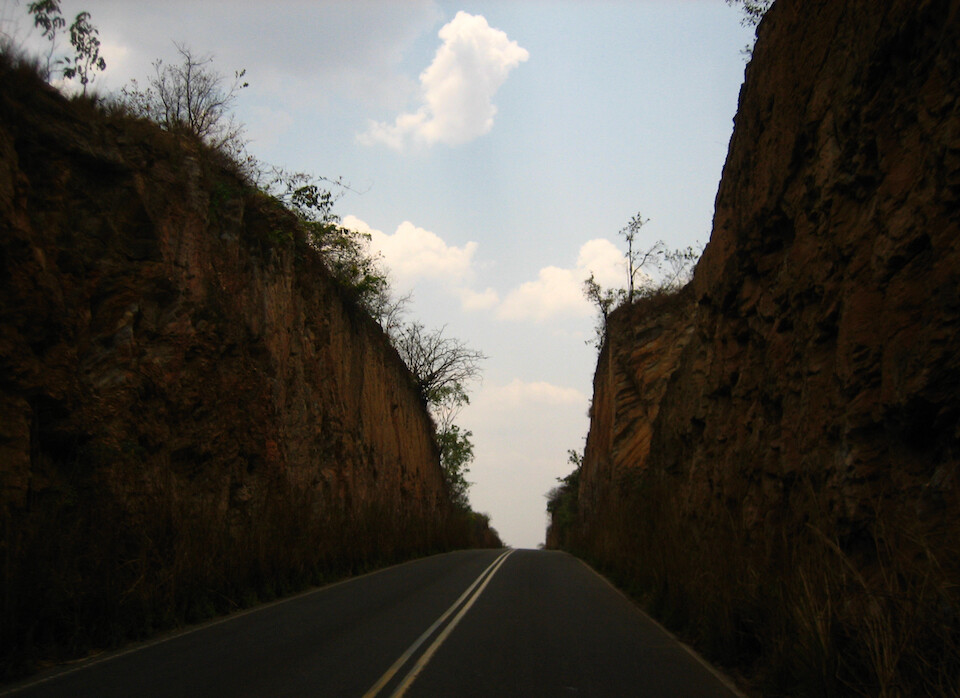
Getting on BR-122 as it cut through some rock.
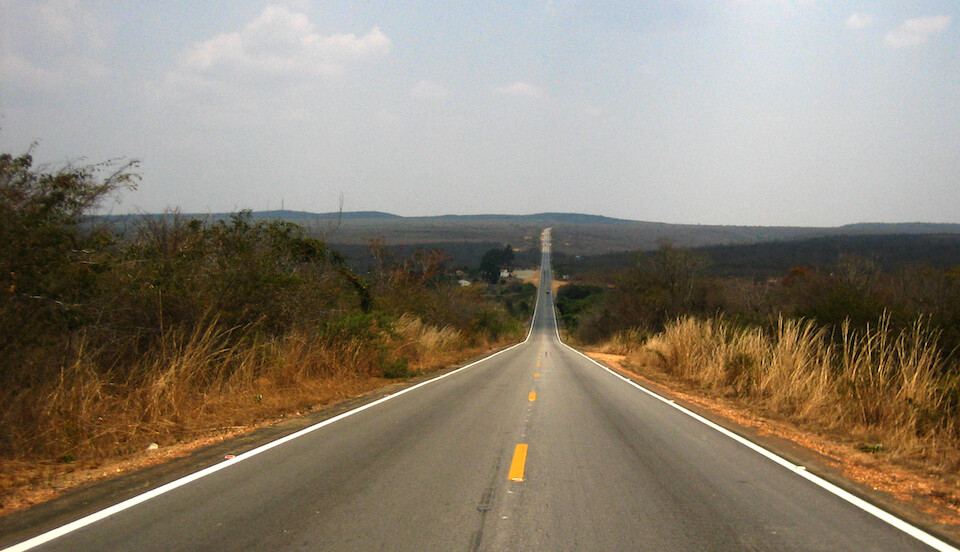
The road was in better condition but I needed some audio books playing to keep my attention up.
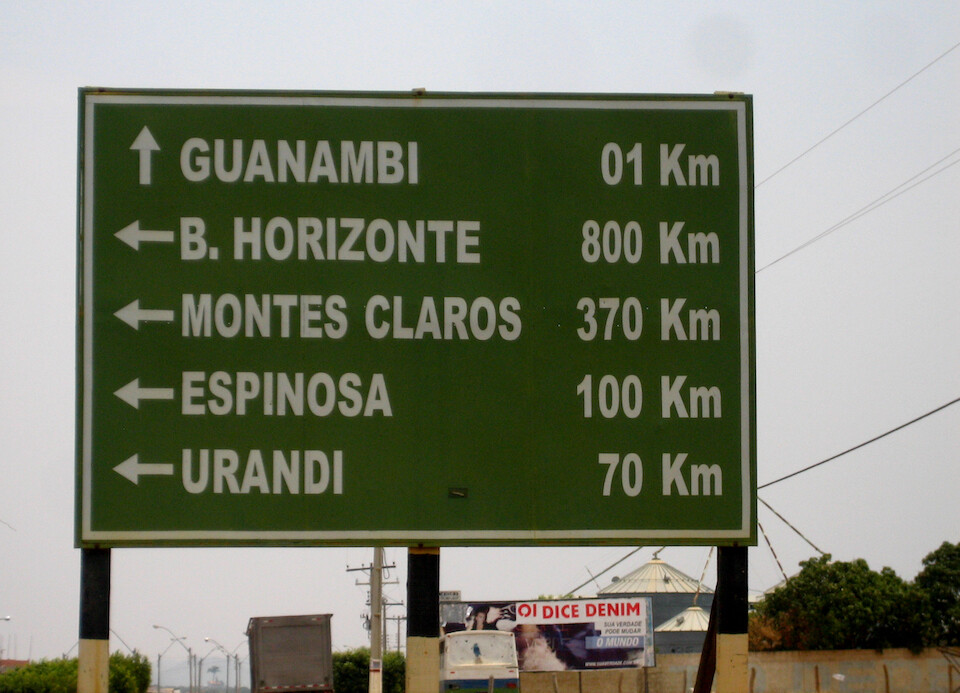
A distance board near Guanambi. I was heading to Montes Claros, making this an 800 km (497 mi) day for me, the longest since leaving the US. From Montes Claros, I was heading to Belo Horizonte and then São Paulo.
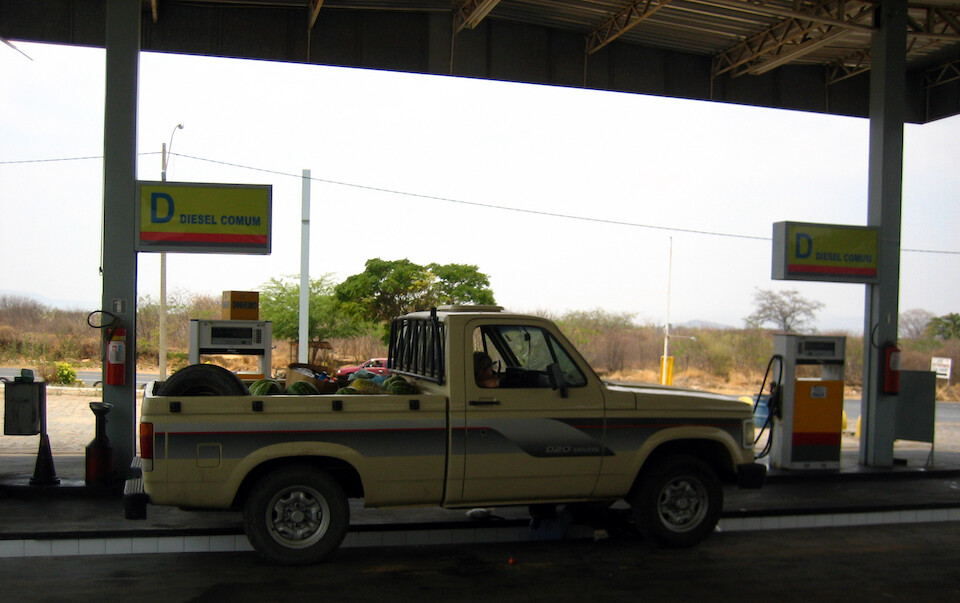
Now, this is perfecting the drive-through concept. A petrol station with a service channel underneath for rapid oil changes.

Solar rays shining through the forthcoming rain clouds. I got drenched in the last few kilometers.
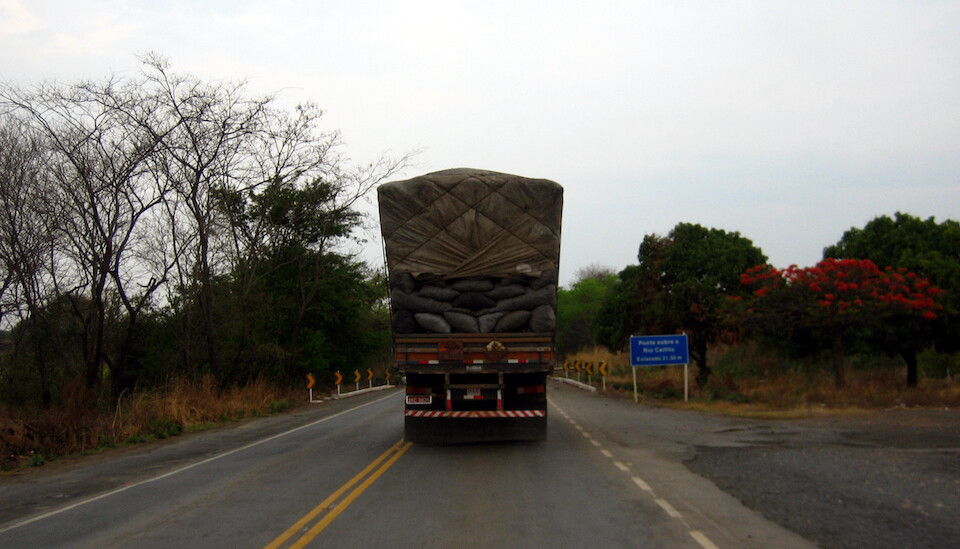
An oddity I noticed in Brazil was these cargo trucks that tend to lean the cargo out the higher it gets. Wouldn't this make tip-overs easier?
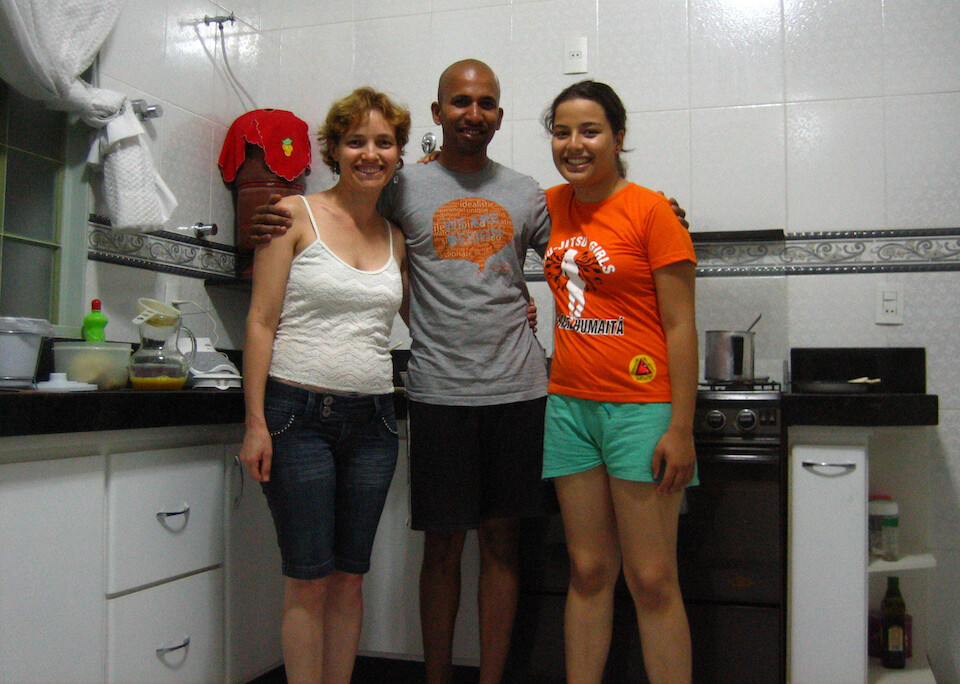
Staying in Montes Claros with Carol and her mom, through CouchSurfing. Carol is in the middle of her medical school studies.
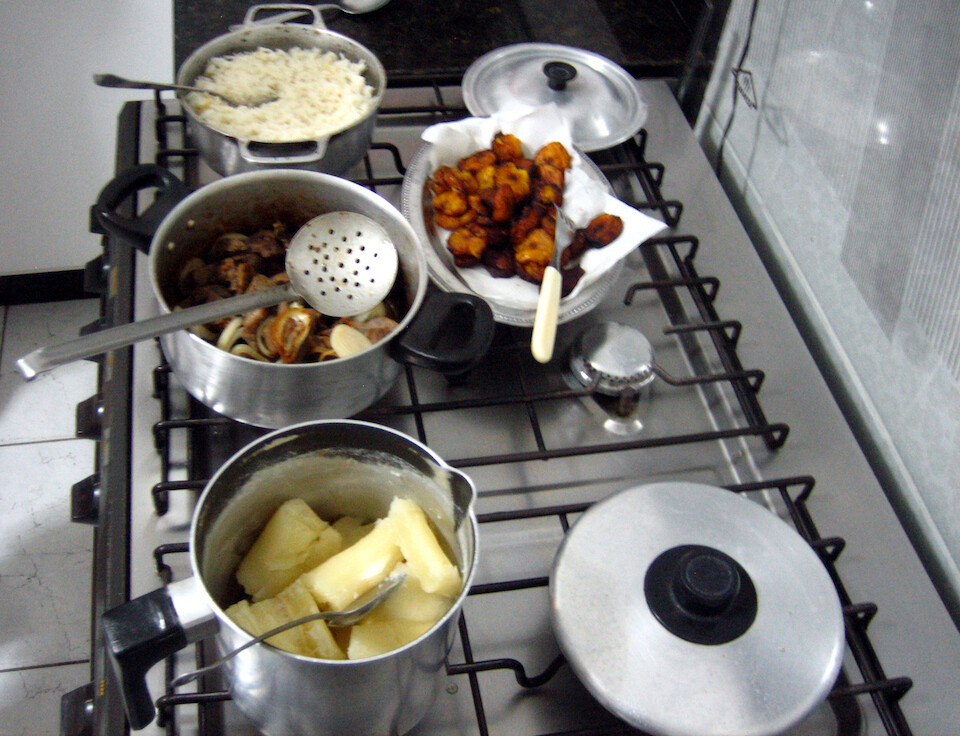
Her mom prepared a quick meal of fried beef with yuca, rice and fried plantains.
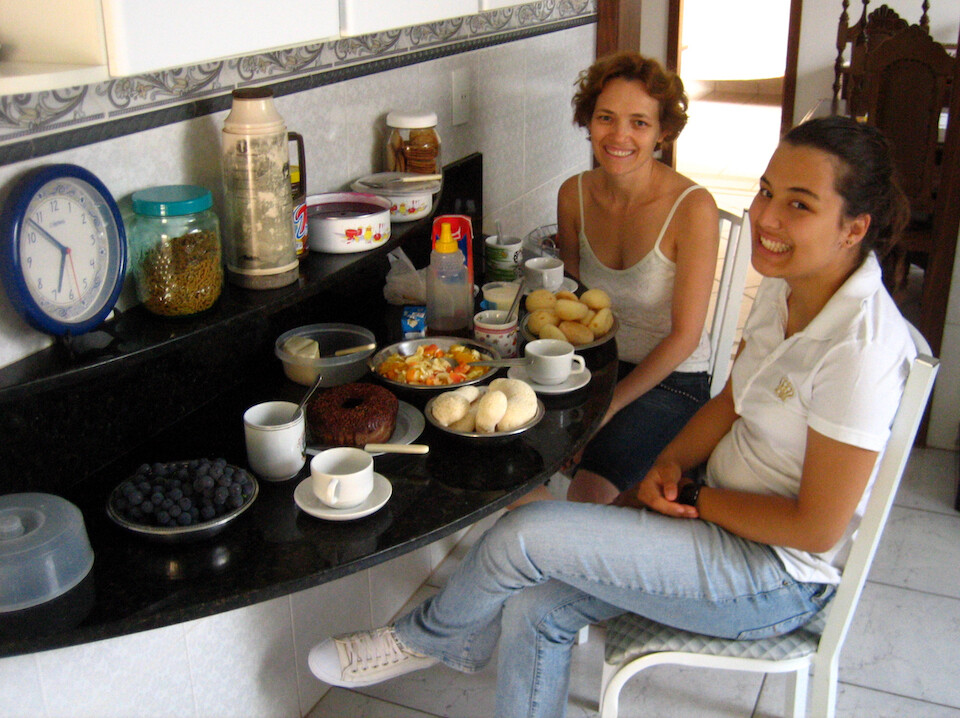
Breakfast the next morning with fresh fruit, chocolate cake, pão de queijo and some tapioca puffs.
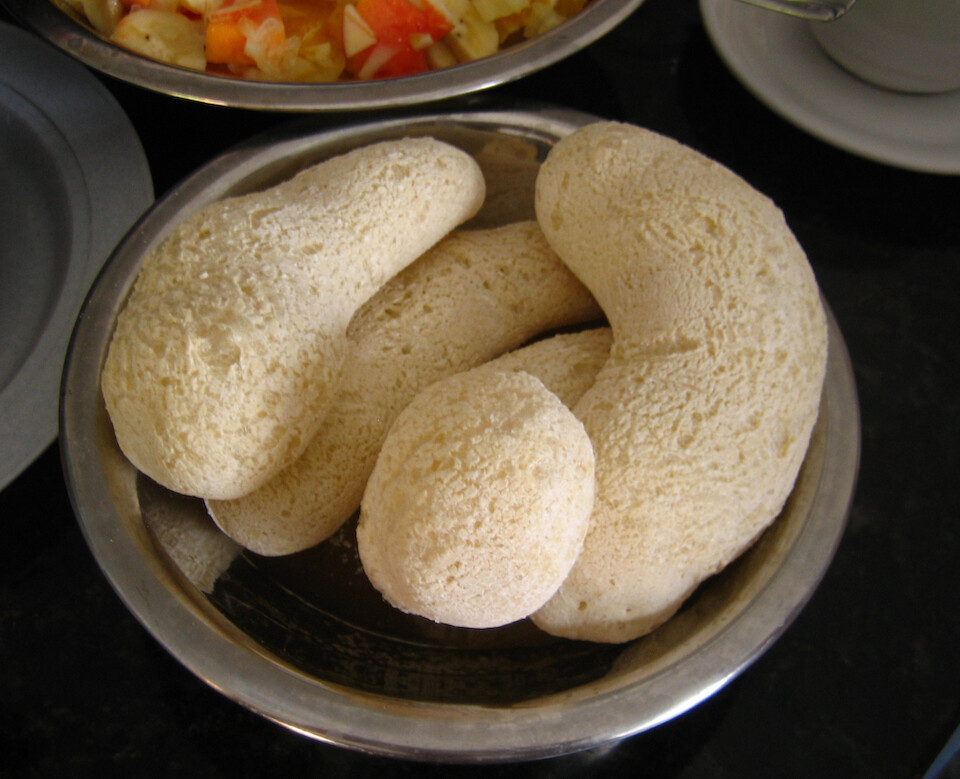
I didn't get the name of these tapioca puffs, but they were quite airy and tasty with butter.
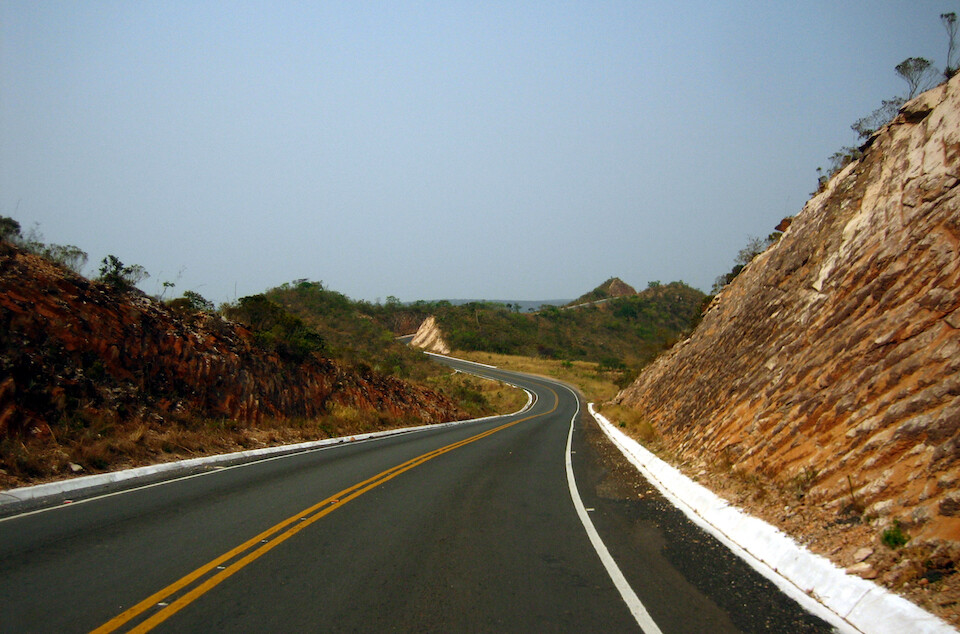
Riding through the hills of Minas Gerais, one of the strongest states in Brazil in terms of economy and culture.
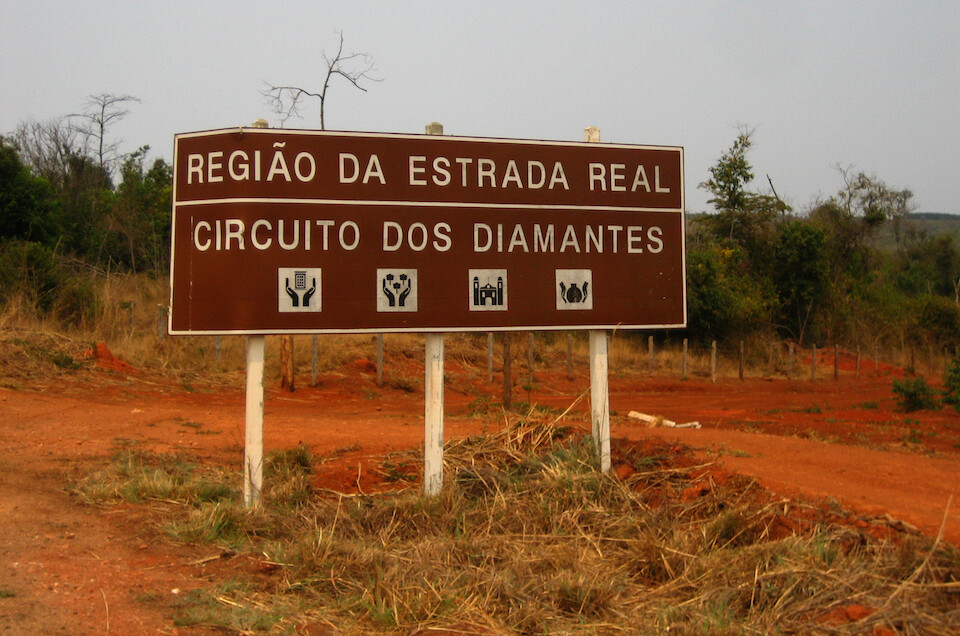
Taking the Estrada Real (royal road) to the diamond mining town of Diamantina. The road was established by the Portuguese crown in the 17th century to bring gold and diamonds from the interior of Brazil for shipment to Portugal and the banning of local production of food made the colony dependent on the crown for food imports to be sent back up the Estrada Real.
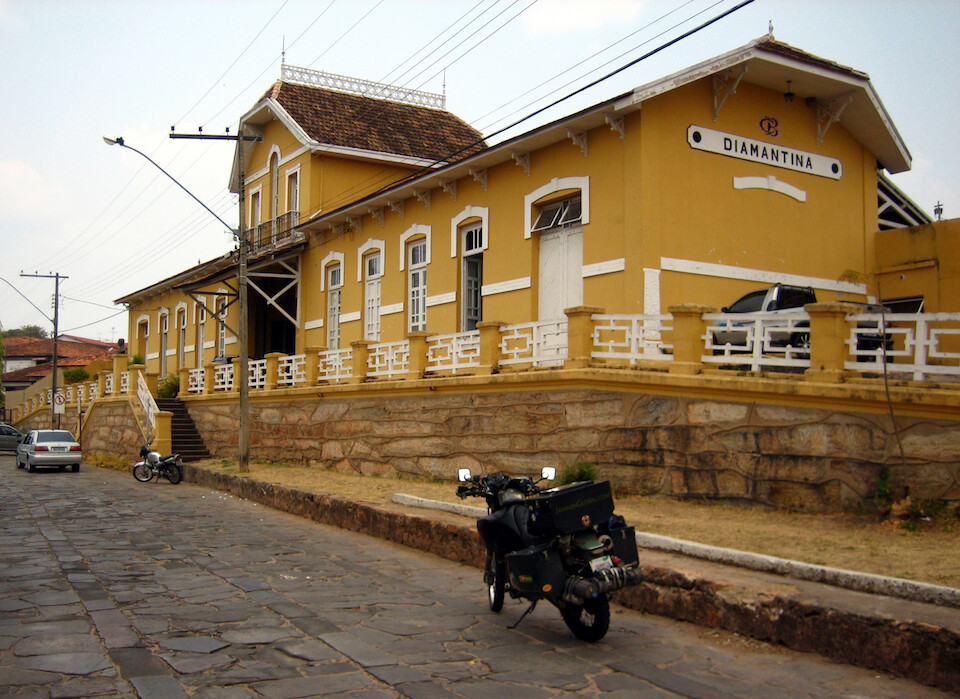
The train station in Diamantina, once the center of diamond mining in the region.
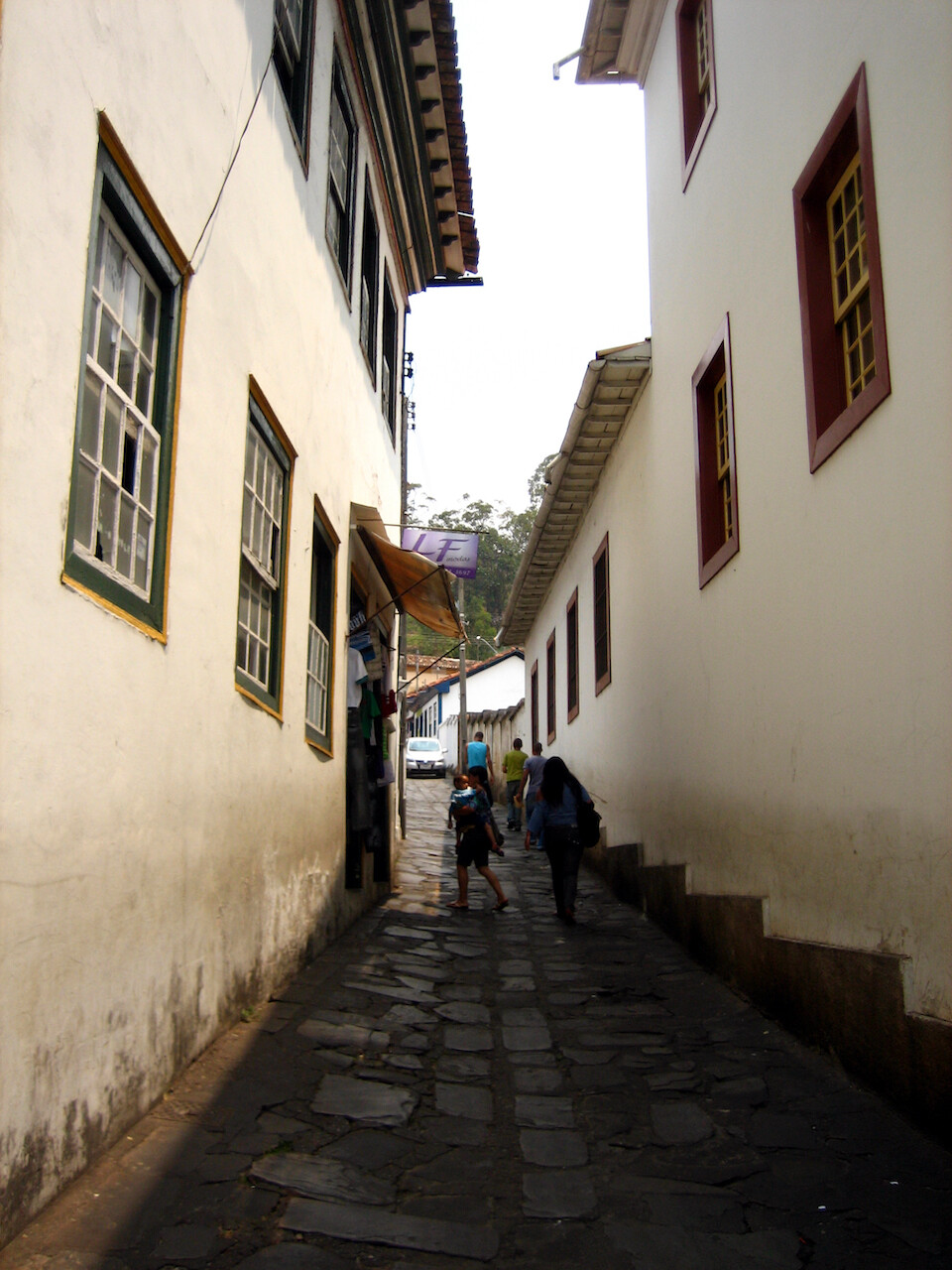
The colonial town is situated in a valley with steep streets. This narrow street was still being used by traffic.
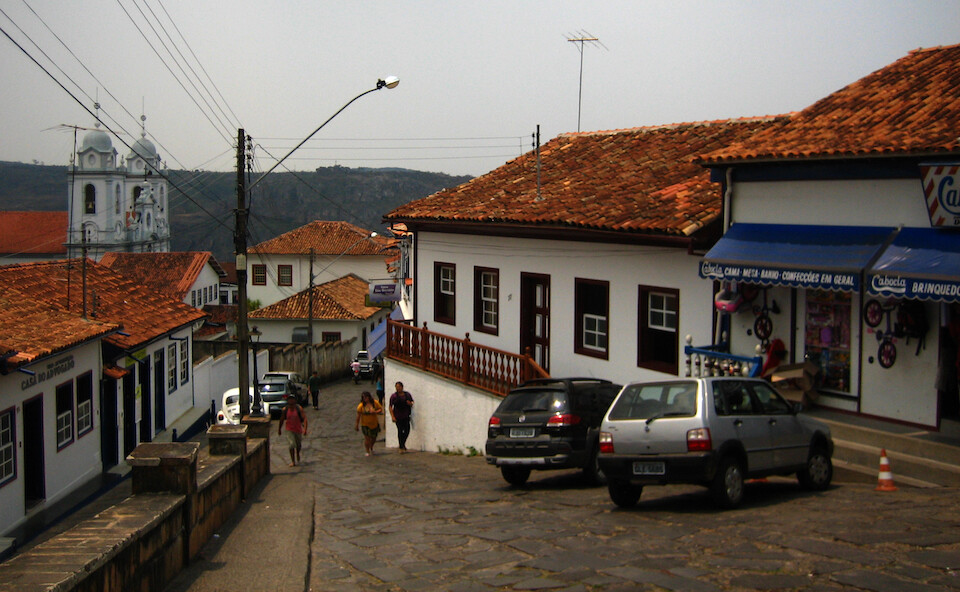
A pleasant town to walk around, covered in cobble stones and red tiled roofs.
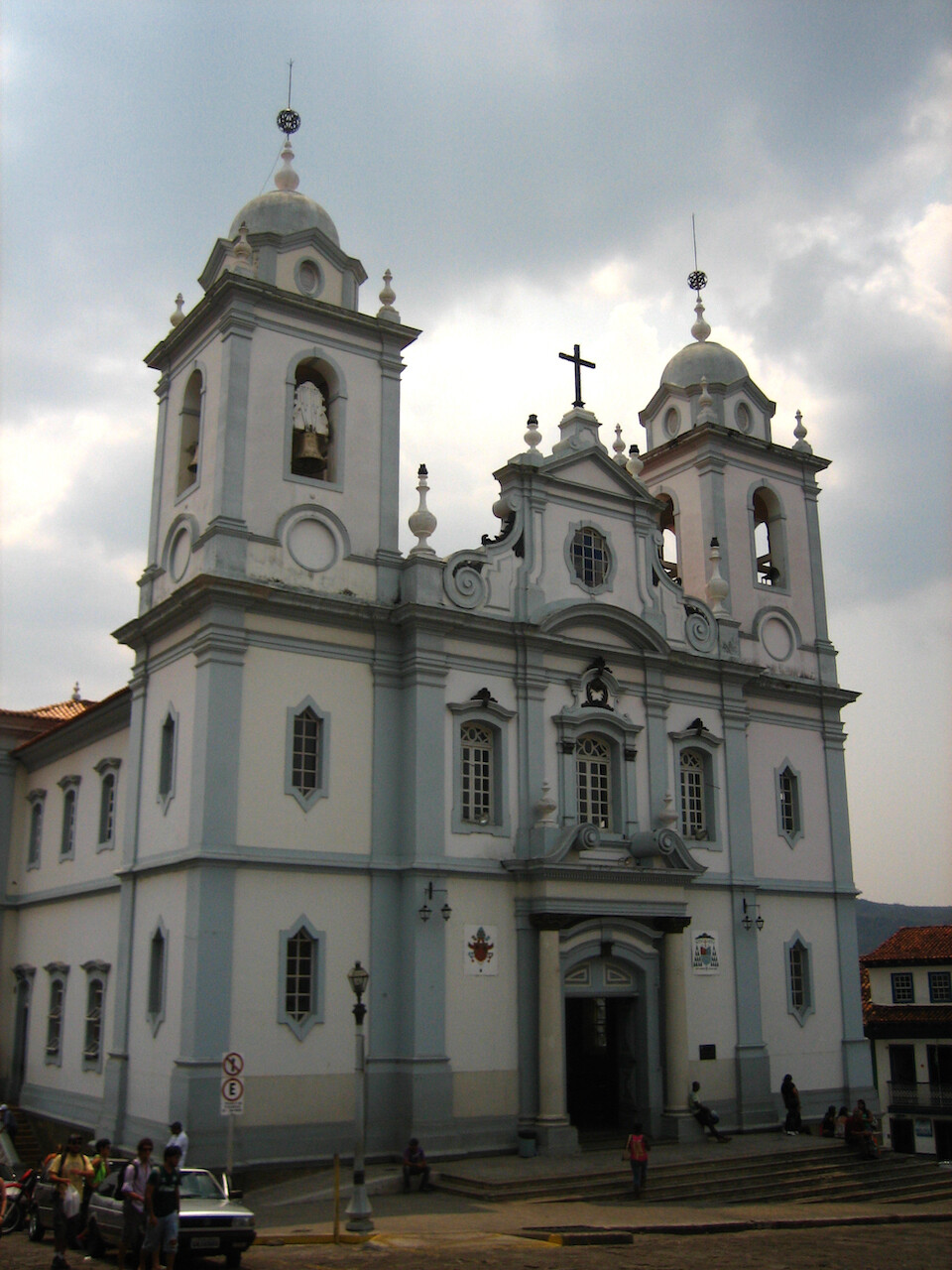
The Santo Antônio cathedral in the central Praça Conselheiro Mota.
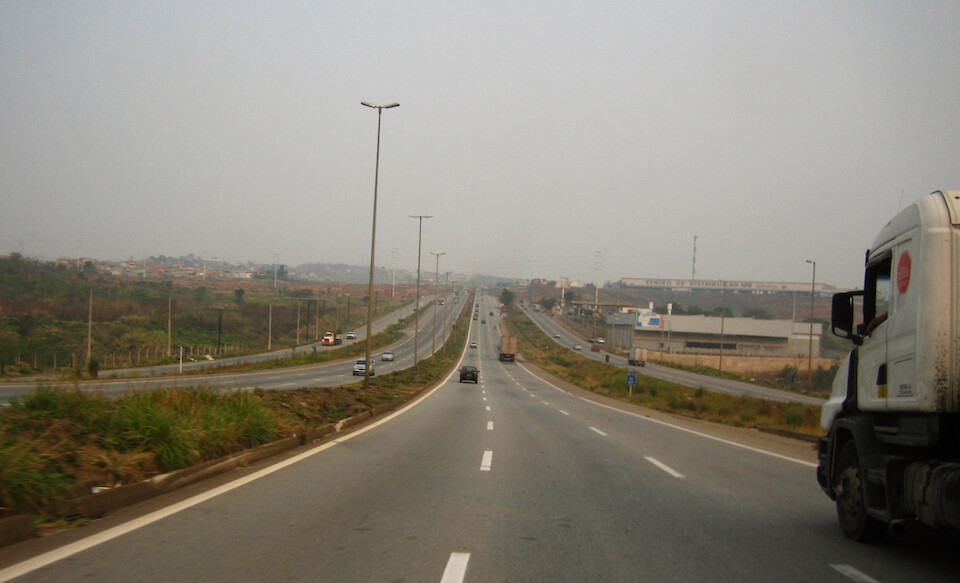
After some lunch, I continued on south to Belo Horizonte. This is where Brazil starts to get crowded and is very well developed as most of the economic activity is based around the states of São Paulo and Minas Gerais. It would be freeways from here on. And sadly, motorcycles do have to pay tolls in Brazil unlike most other South American countries.
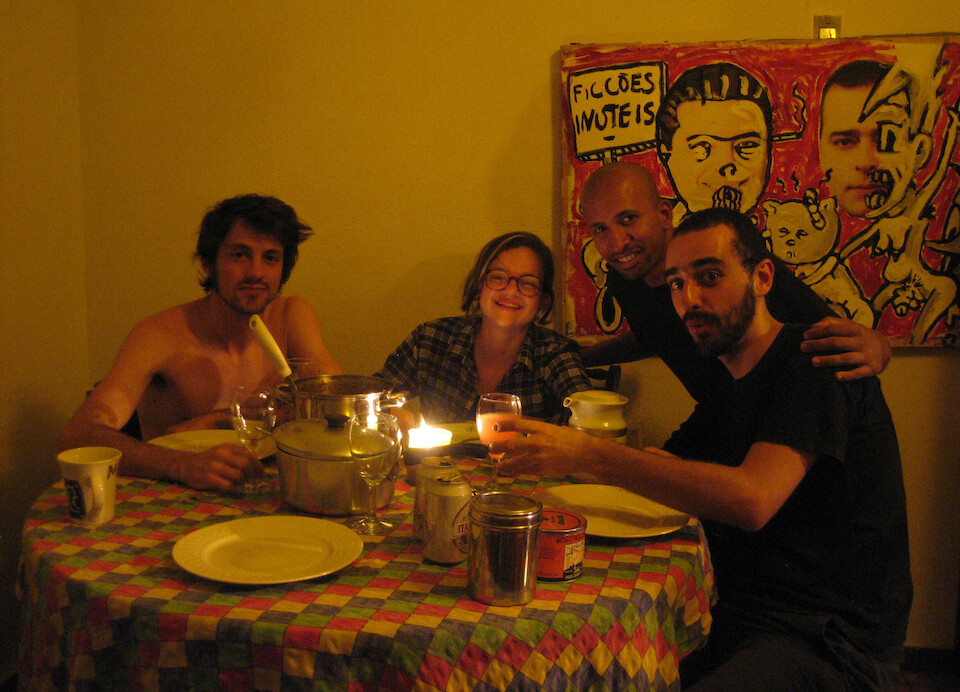
About to dig in to a chicken curry that I made for my hosts, Daniel and his friends in Belo Horizonte.
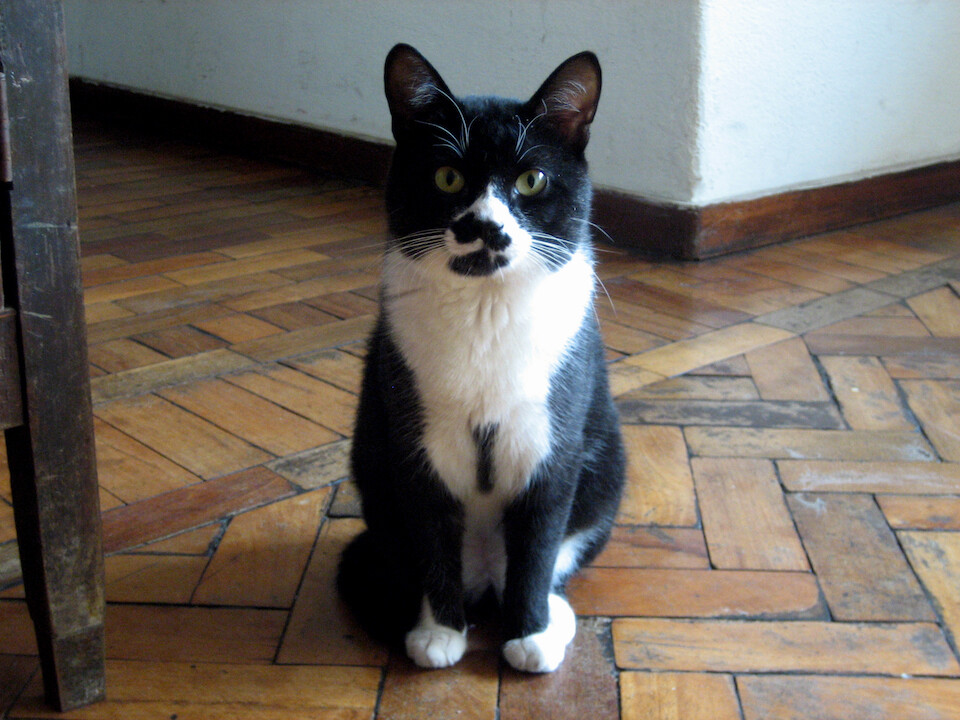
His cat was just asking to have his picture taken, sitting there so nicely and with his funny mustache, I couldn't refuse.
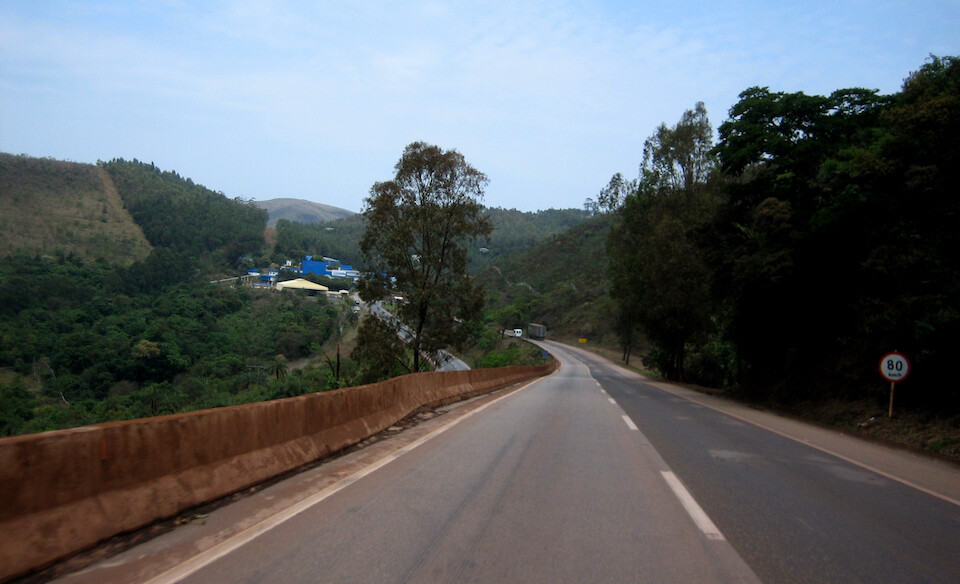
Even though it was all freeways, with the southern region of Brazil being quite hilly, it was still fun riding.
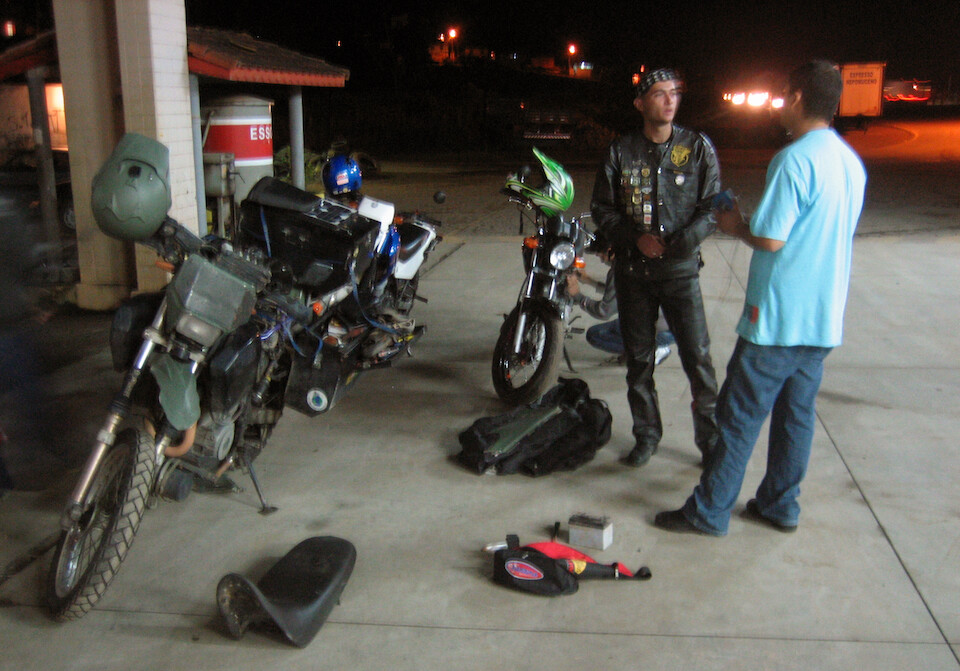
Just 150 kms (94 mi) from my destination of São Paulo, another bike issue revealed itself: dead battery. The bike was struggling on the highway and after rolling into this petrol station in Cambui, it wouldn't start again. I got it push-started but it quickly died again. A local car enthusiast at the nearby borracharia (tire repair shop) said he would tell a bike mechanic (in blue shirt) to come over and help me out. While waiting for the mechanic, Rockk (pronounced 'Hock'), all dressed in biker leather gear pulled up to fuel his Honda 250 touring bike and I got talking to him. He decided to hang around and give me company until I got sorted out. The mechanic told me my battery wasn't holding a charge anymore; it had run out of cranking amps and was all used up (it was a brand new Yuasa battery at the beginning of the trip). So, he gave me a smaller battery from a typical Honda 125cc bike that would be good enough for a couple starts and he said it would get me to São Paulo. I thanked him and he refused to take any money for his efforts.
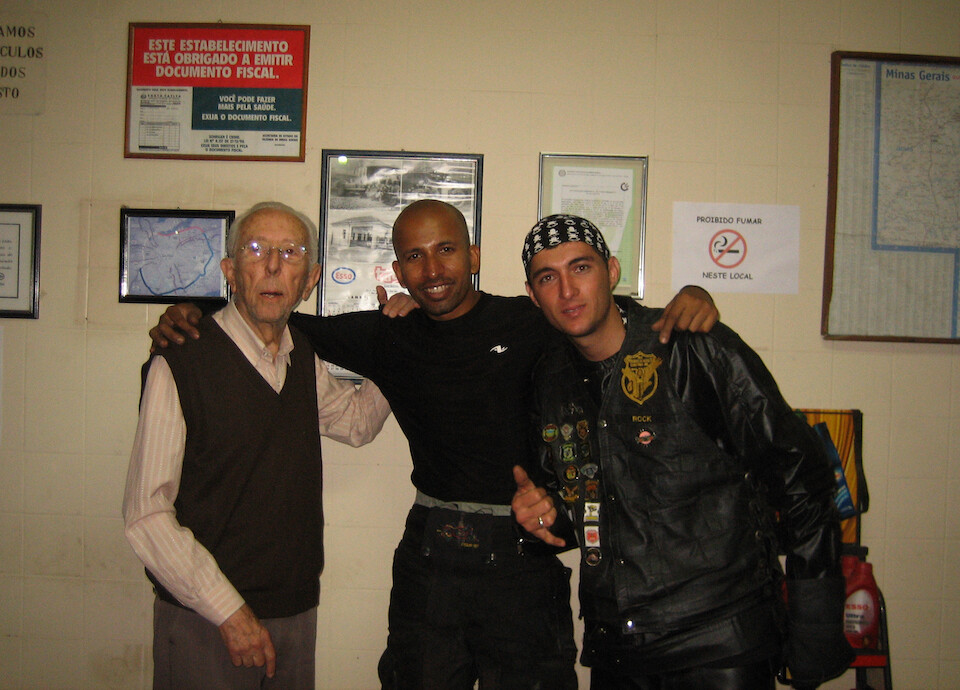
And just our luck that two contemporary bikers would serendipitously connect with a biker from a bygone era. The older gentleman here is Tatita, the owner of the petrol station and attached auto dealer. He came over after the station manager told him that some bikers were hanging around. Actually, I was thinking through options as it was getting late and was asking about possibly storing the bike somewhere for the night so I could get it sorted tomorrow. Tatita came over and said we could use any of his facilities, one biker to another.
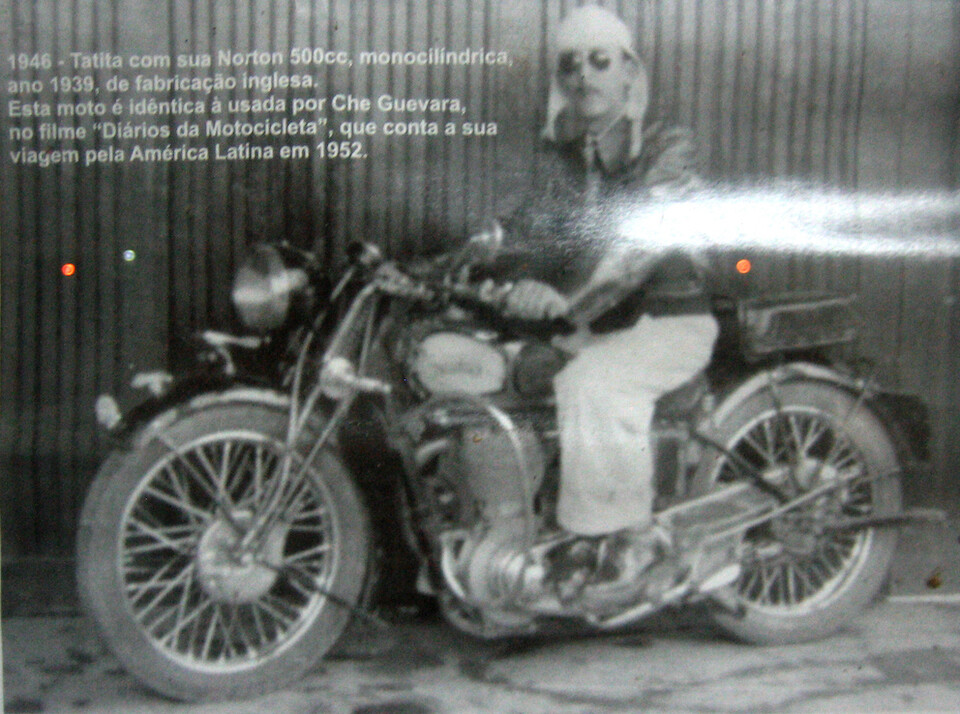
A poster on the wall had this photo of Tatita in 1946 on his 1939 Norton 500cc motorcycle. The caption reads that this was the same type of motorcycle that Ernesto (Che) Guevara and Alberto Granado used in their epic journey around South America in 1952 that spawned The Motorcycle Diaries. Tatita seemed quite the renegade for his time. I wonder what he thought about us youngins.
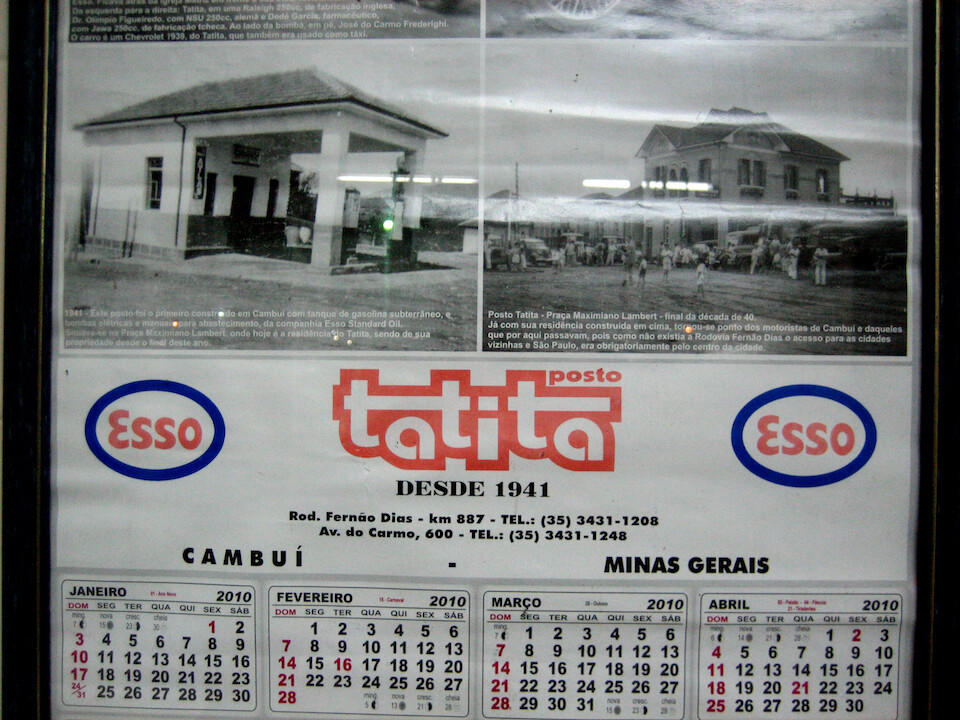
The poster in the office with more classic photos.
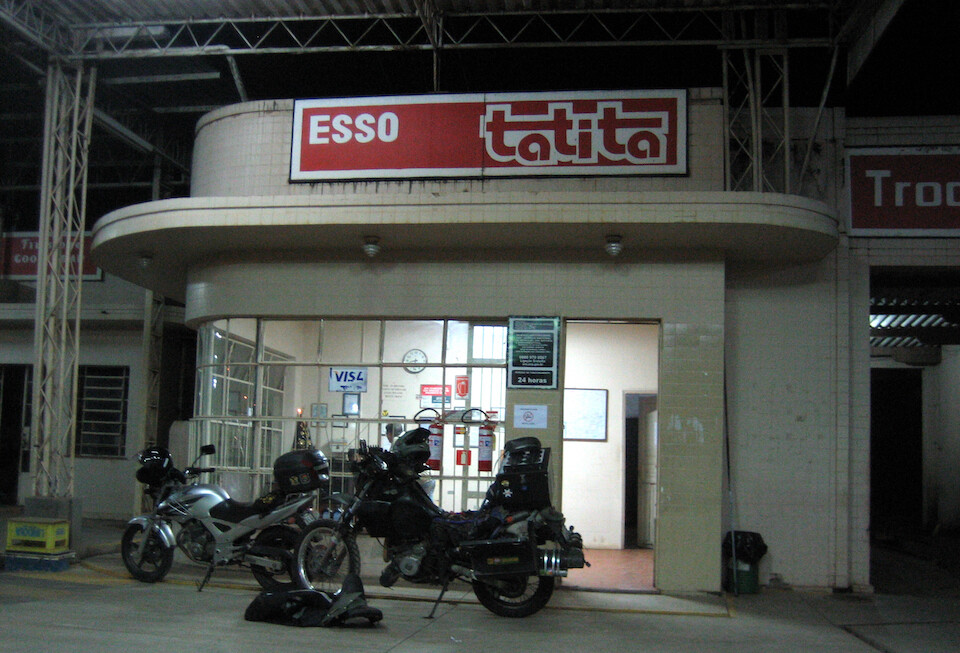
Tatita's petrol station today. sanDRina was alive again, now with a much smaller battery, but good to go for a few hundred kilometres.
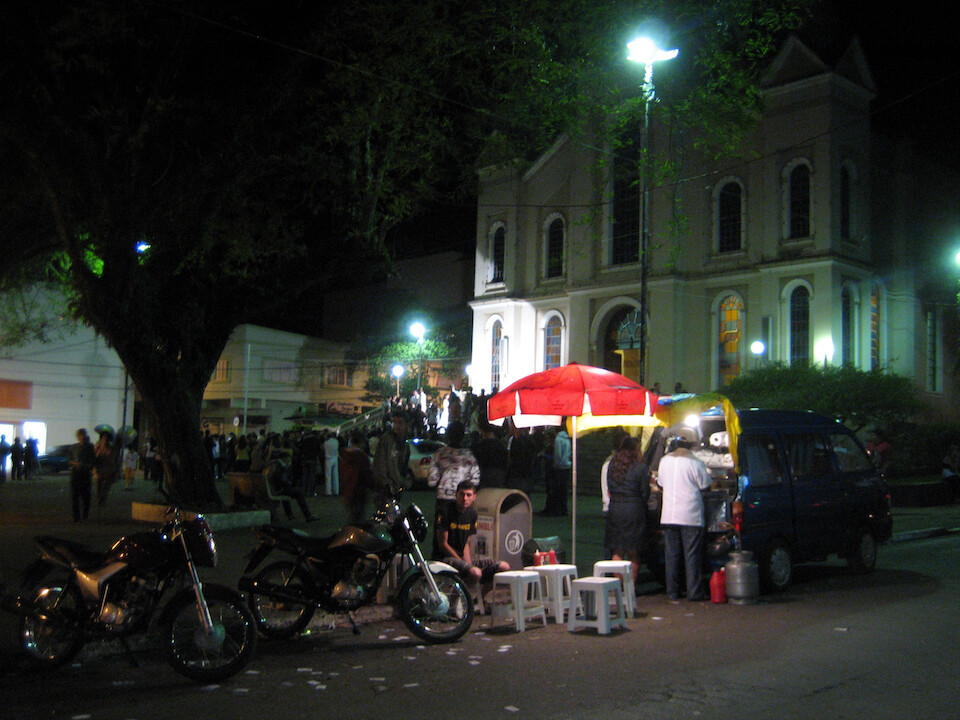
Rockk is a certified auto mechanic and was coming from the interior of Minas Gerais and heading to the southern state of Santa Catarina for a workshop. We shared a room that night and here we're getting some grub in the main square of Cambui.
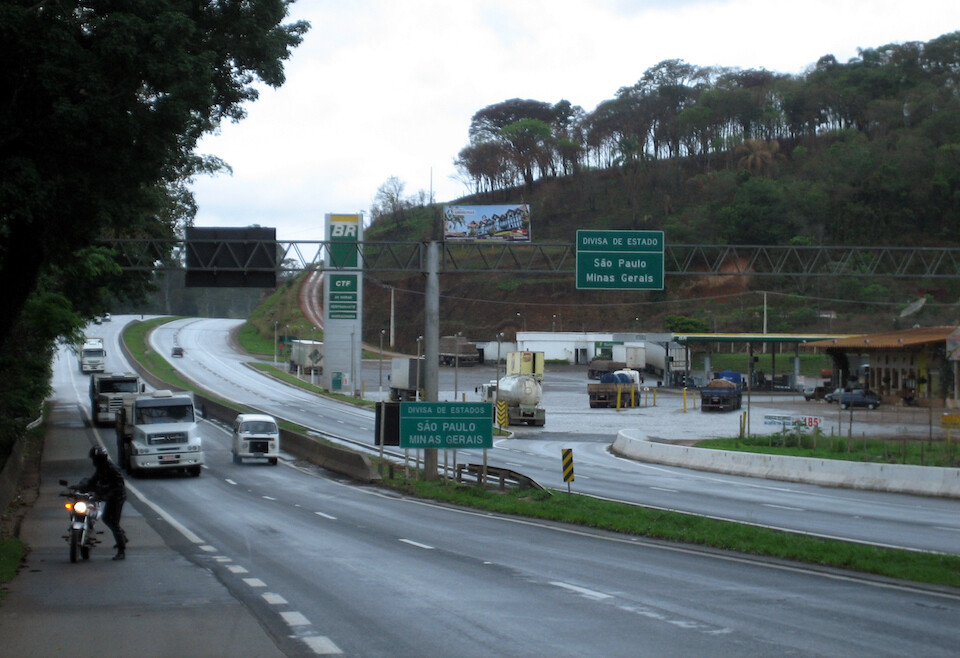
Stopping at the state border the next day as Rockk wanted a picture of the sign. I did the same thing when I was touring around the US, stopping for welcome signs at each state border.
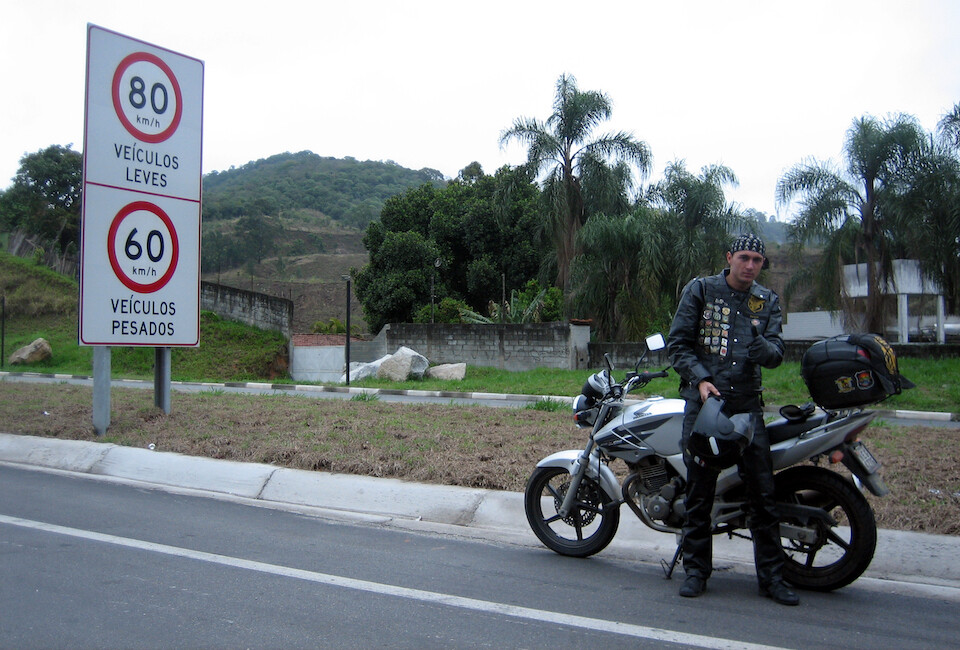
We split off as we got near the megalopolis of São Paulo as he would be taking a route around the city and I was heading inside. Thanks for the company, fellow rider. When I break down now, instead of worrying about what's going to happen, I simply ask, "Ok, who does the Universe want me to meet now?" :)
Next: Brazil, Part 8: Servicing sanDRina in Sao Paulo
Previous: Brazil, Part 6: Salvador da Bahia